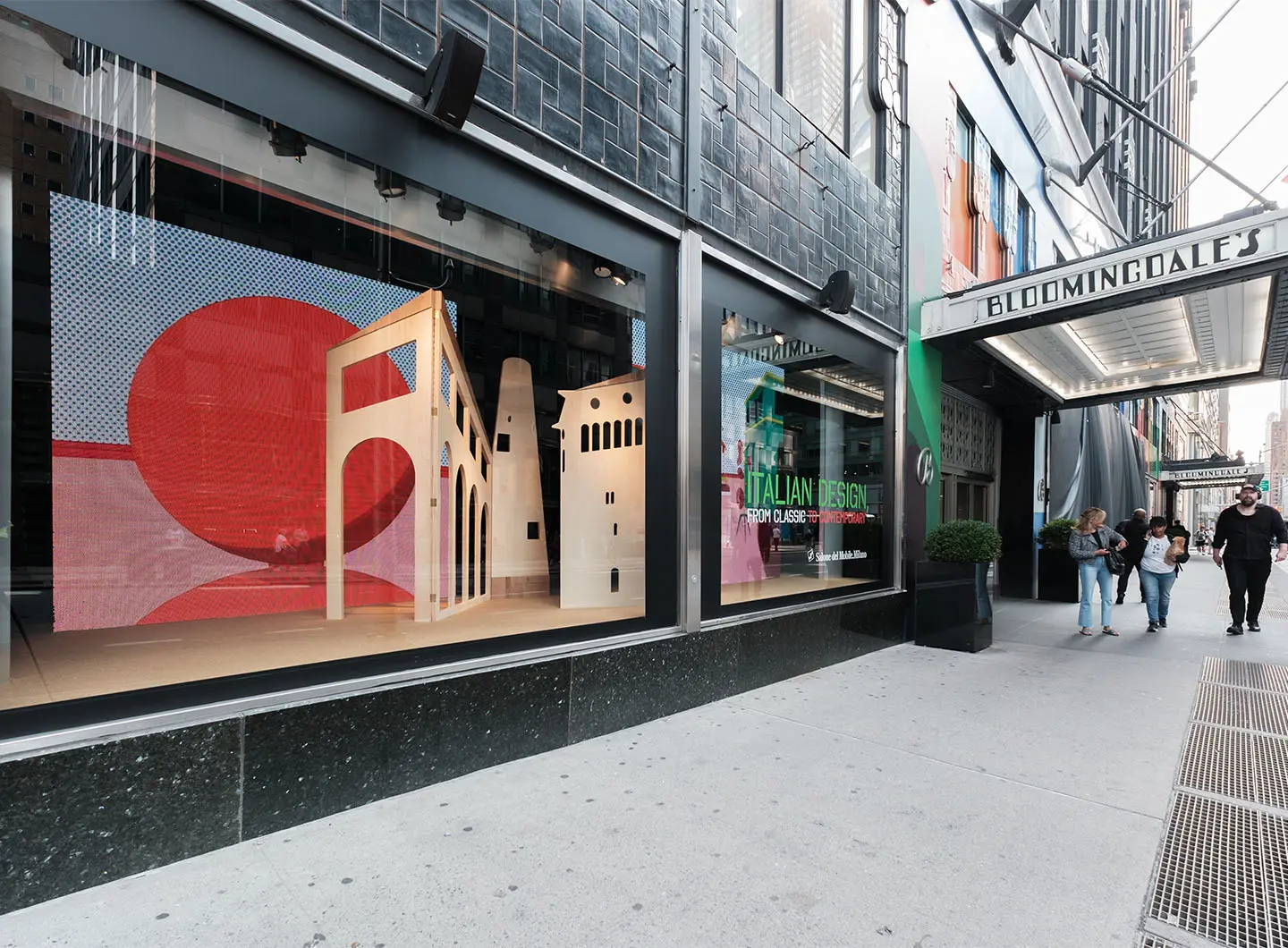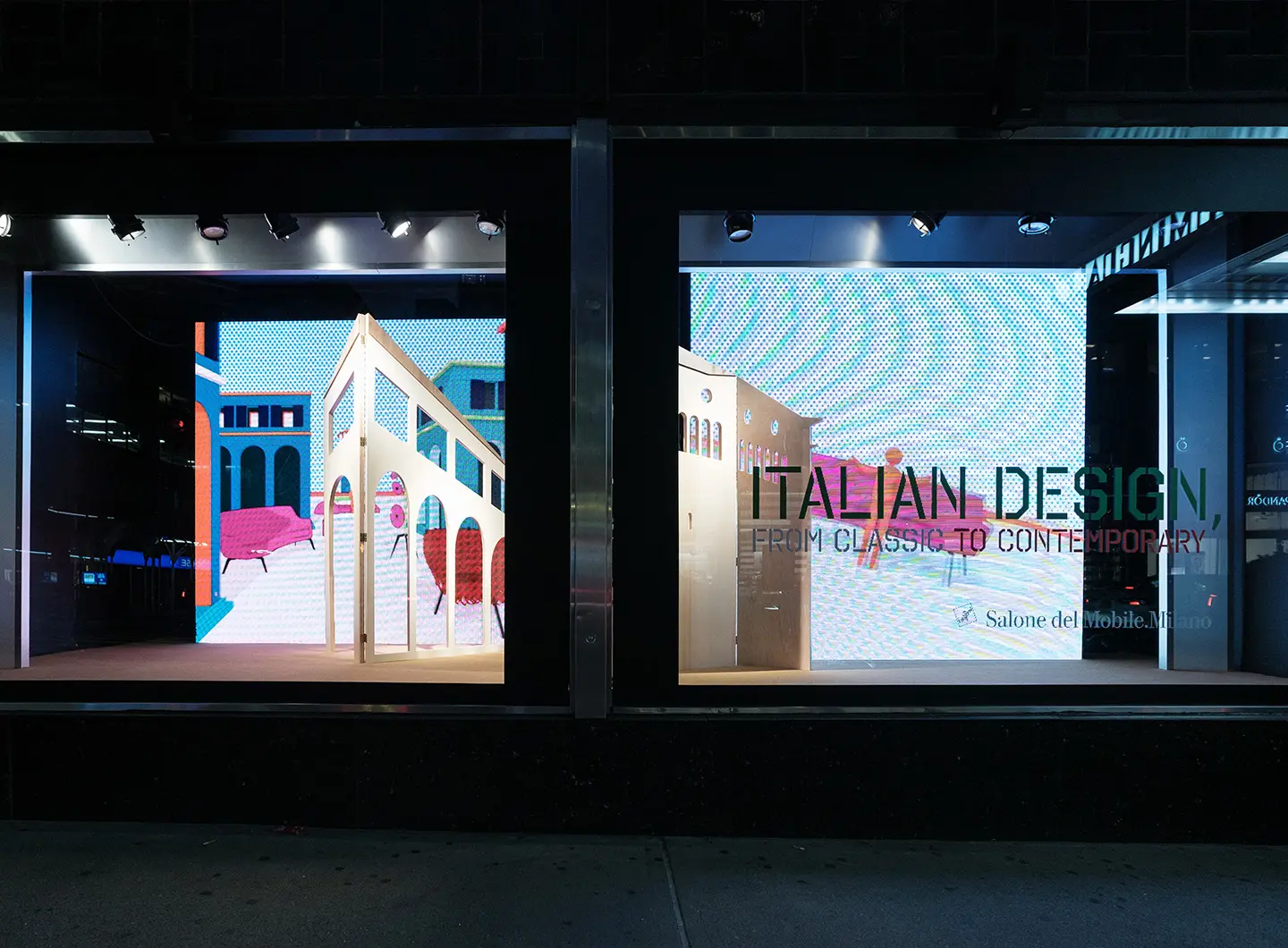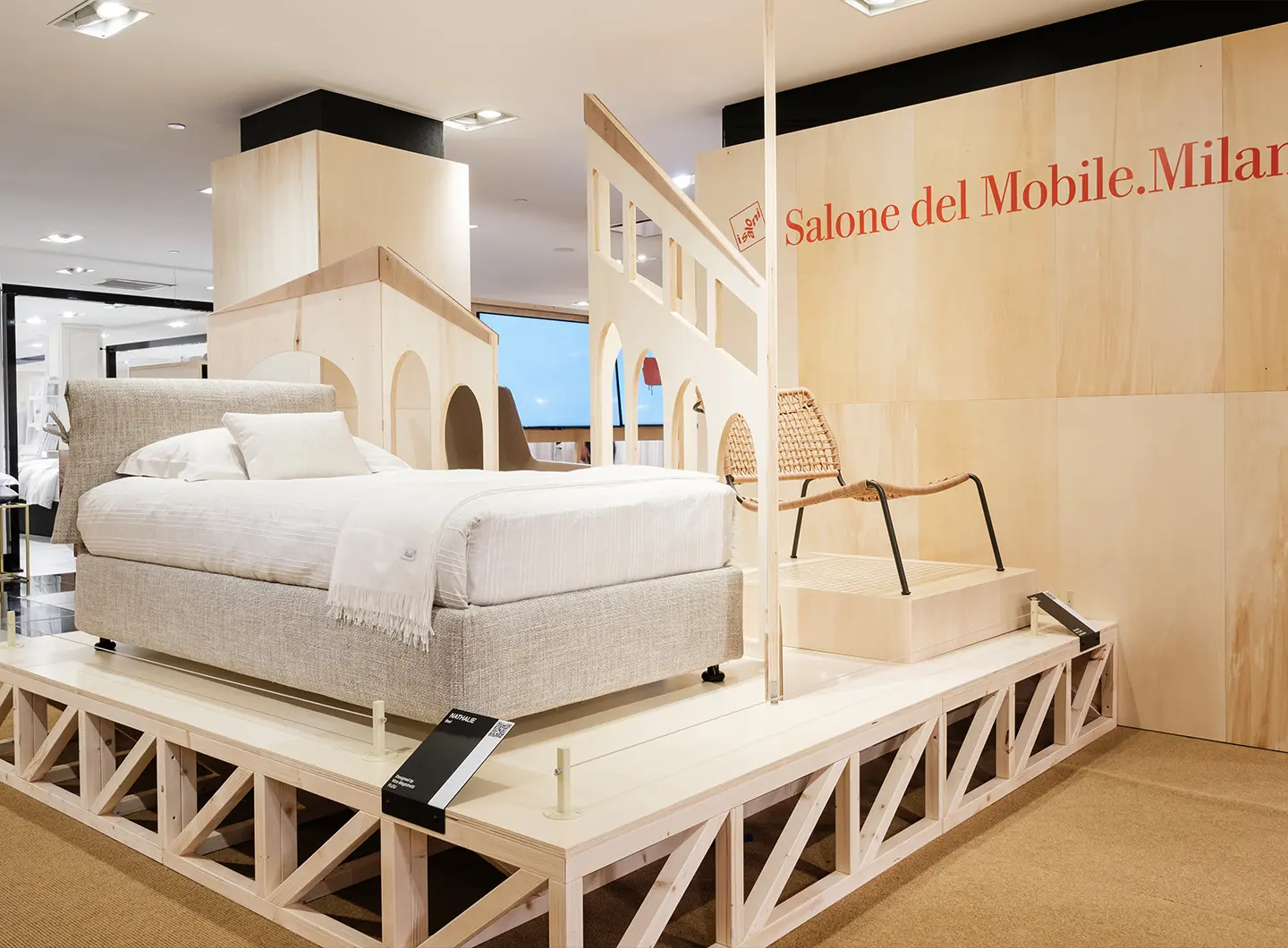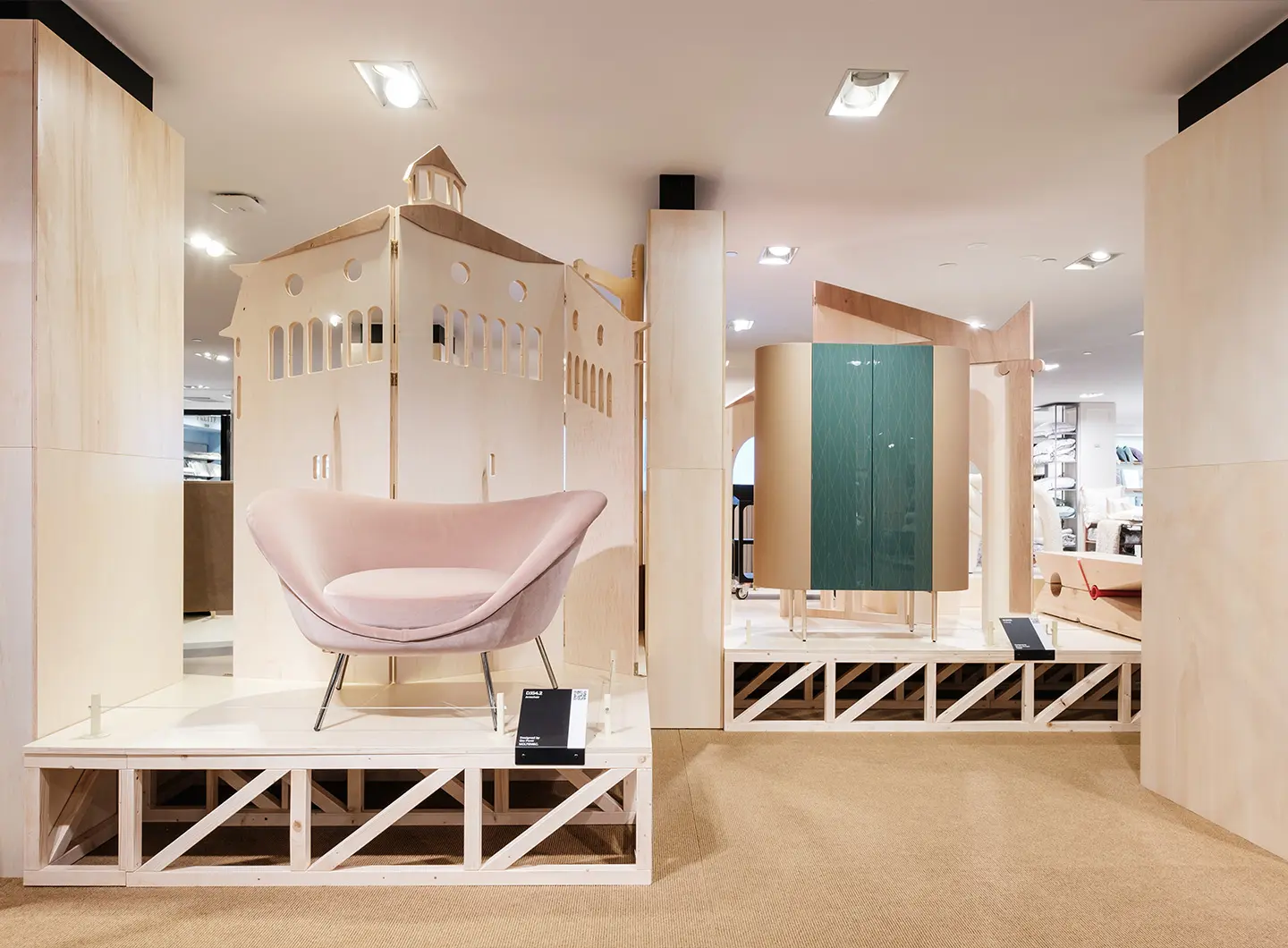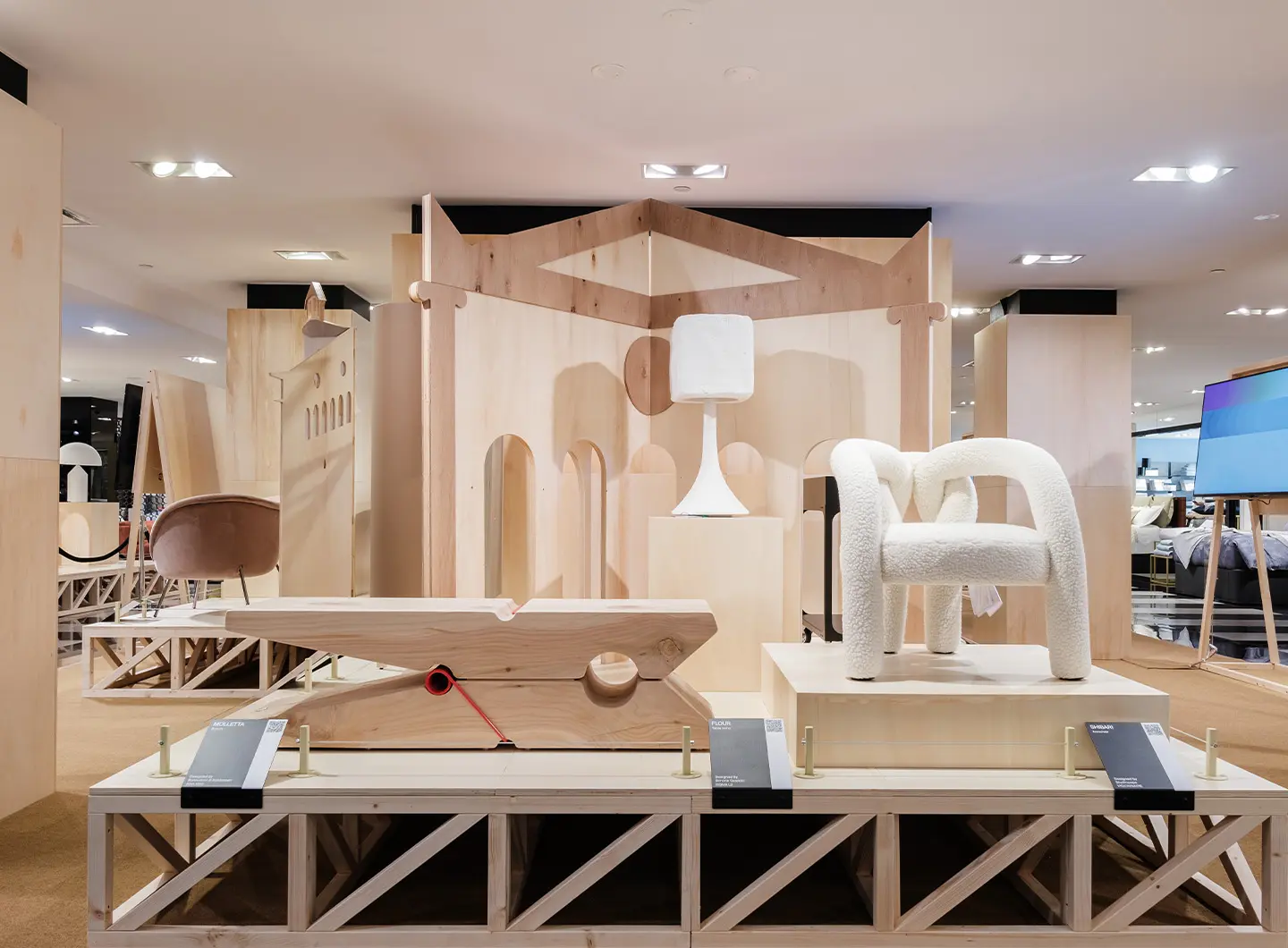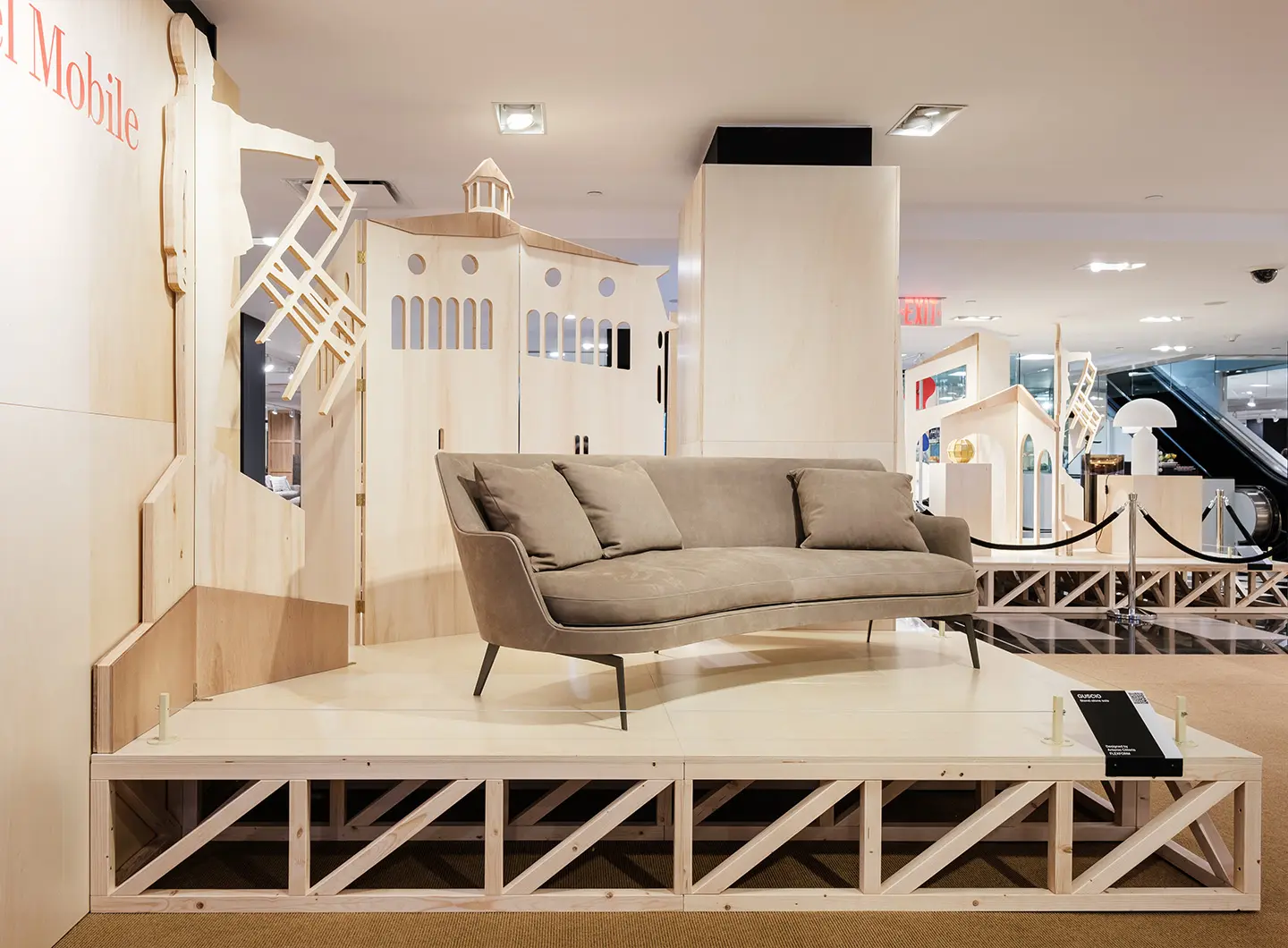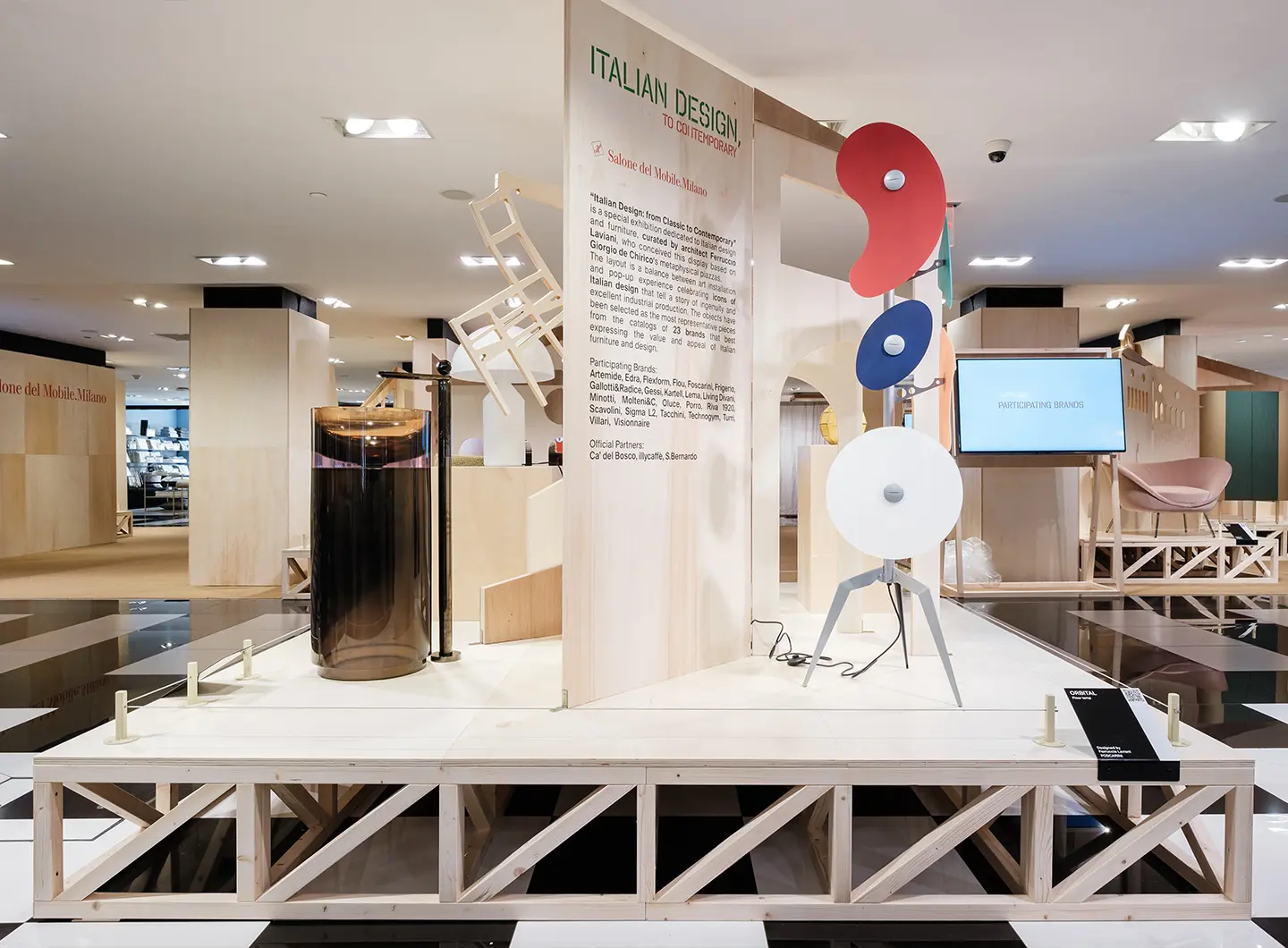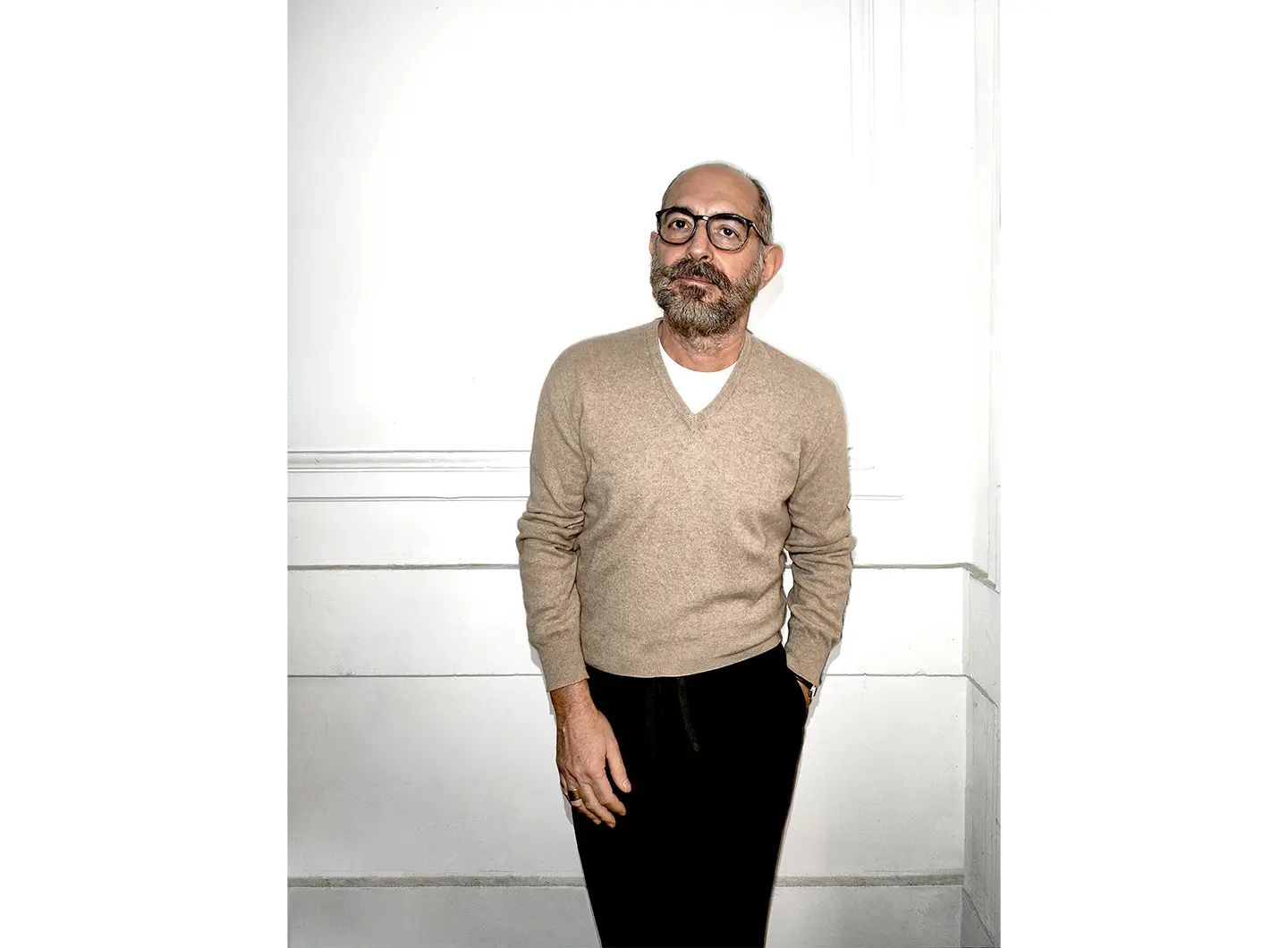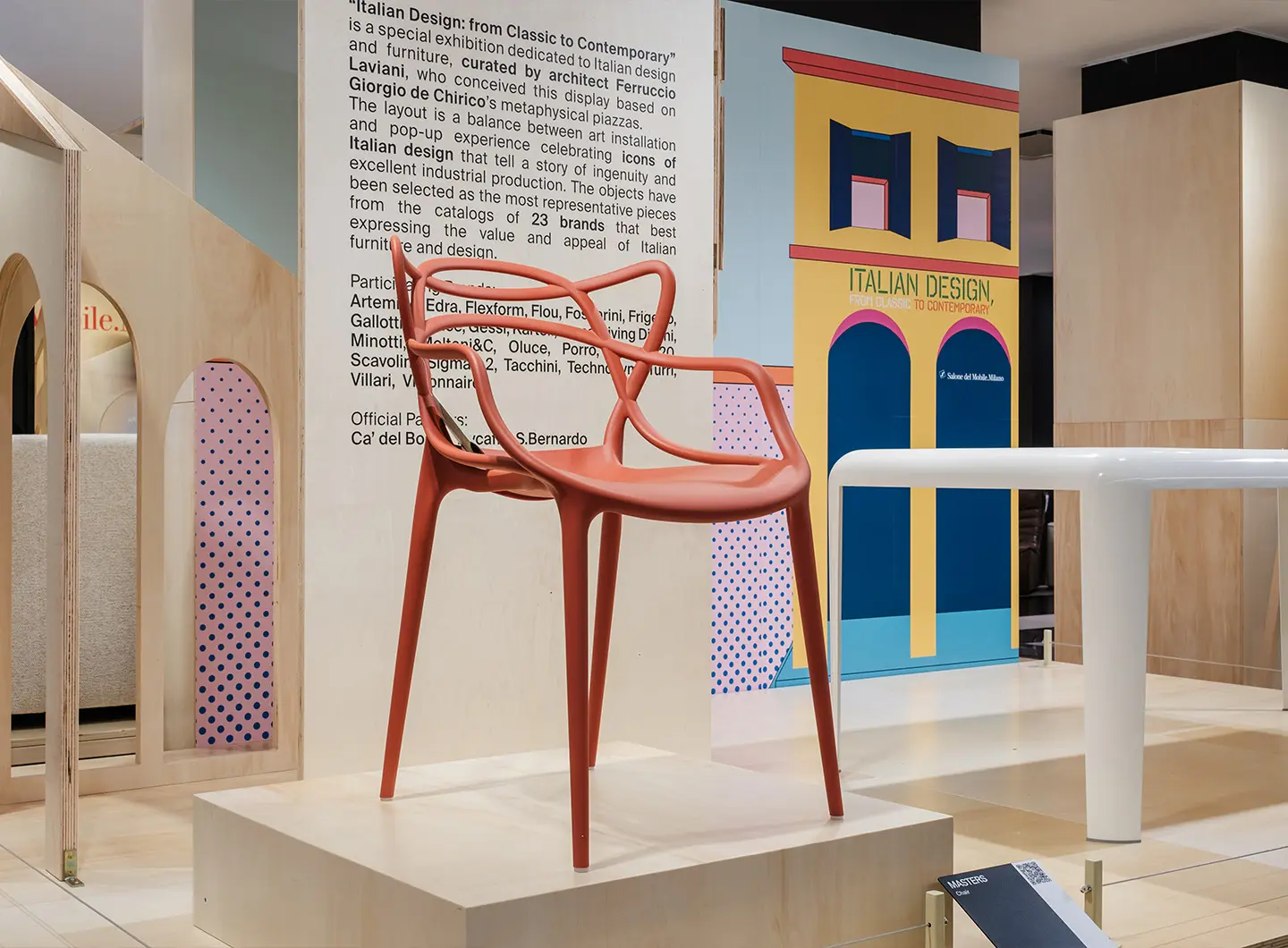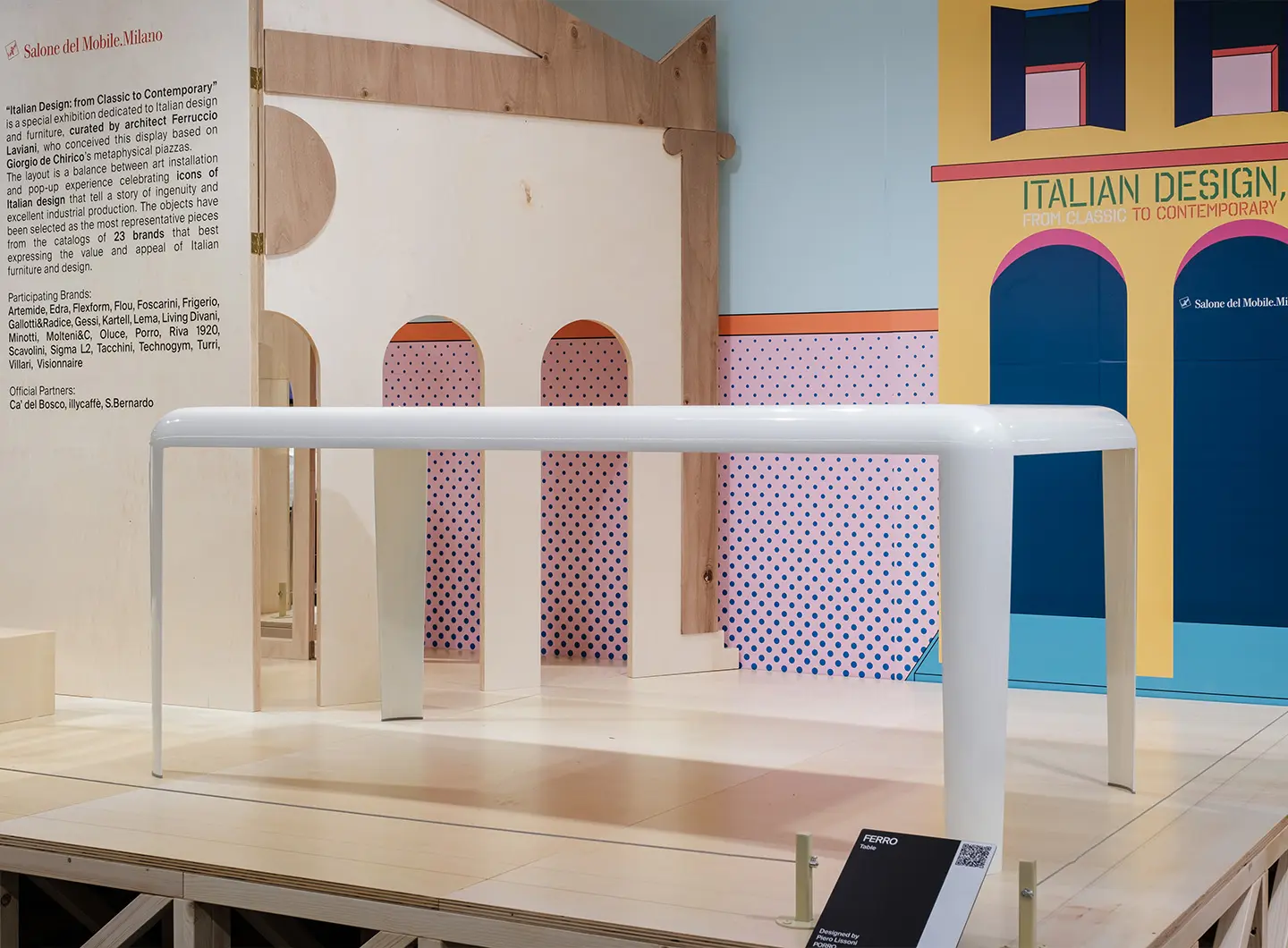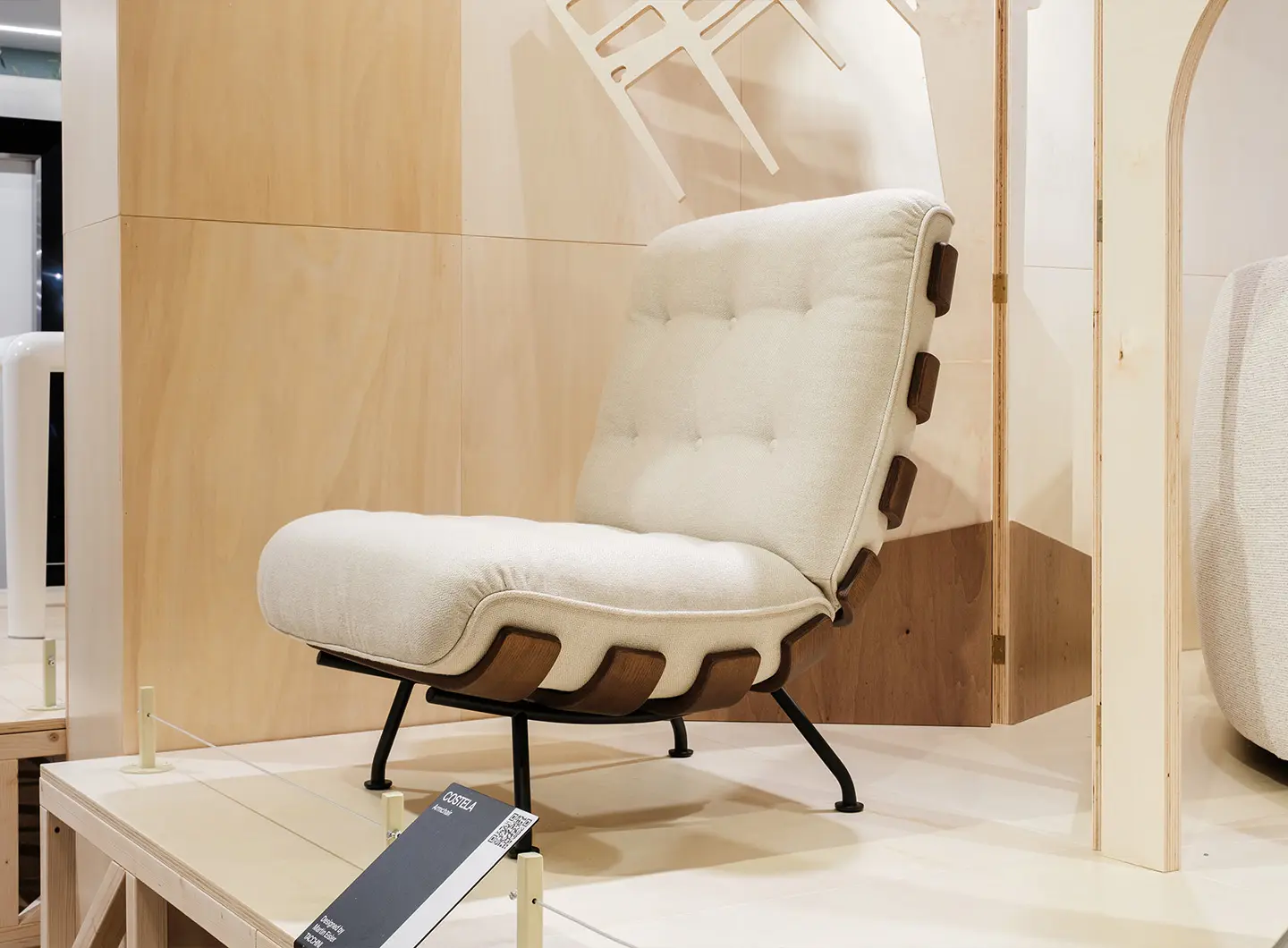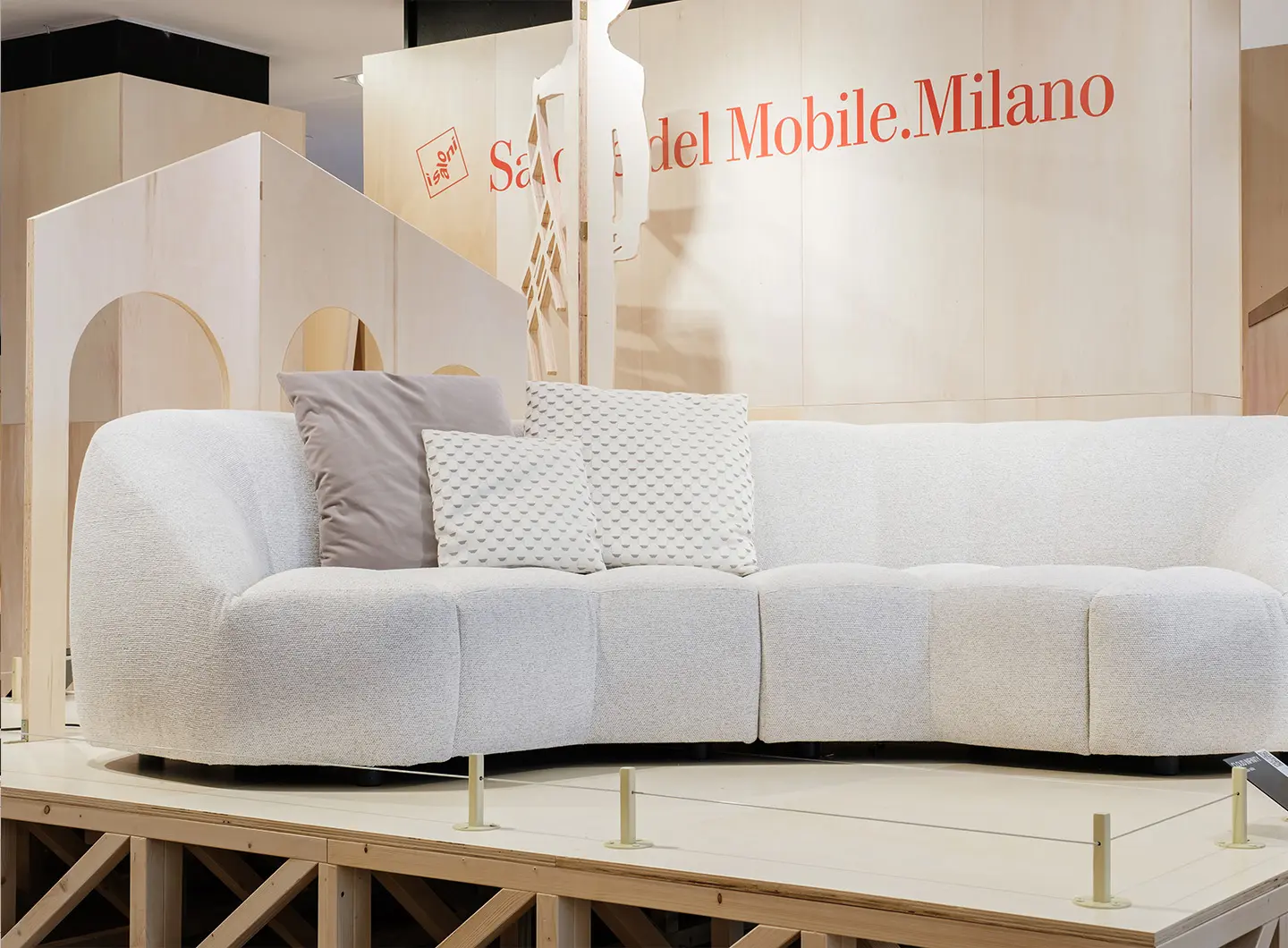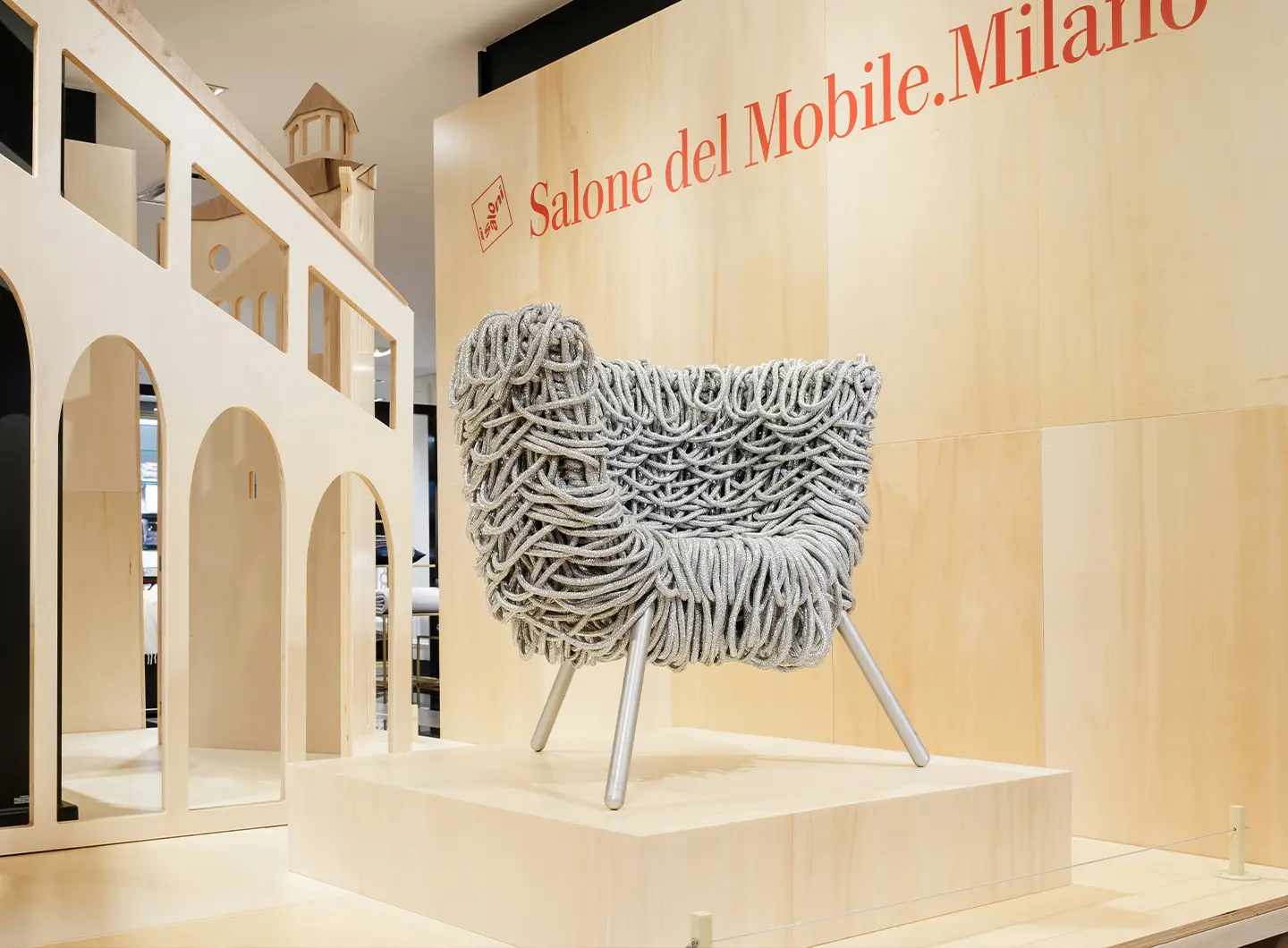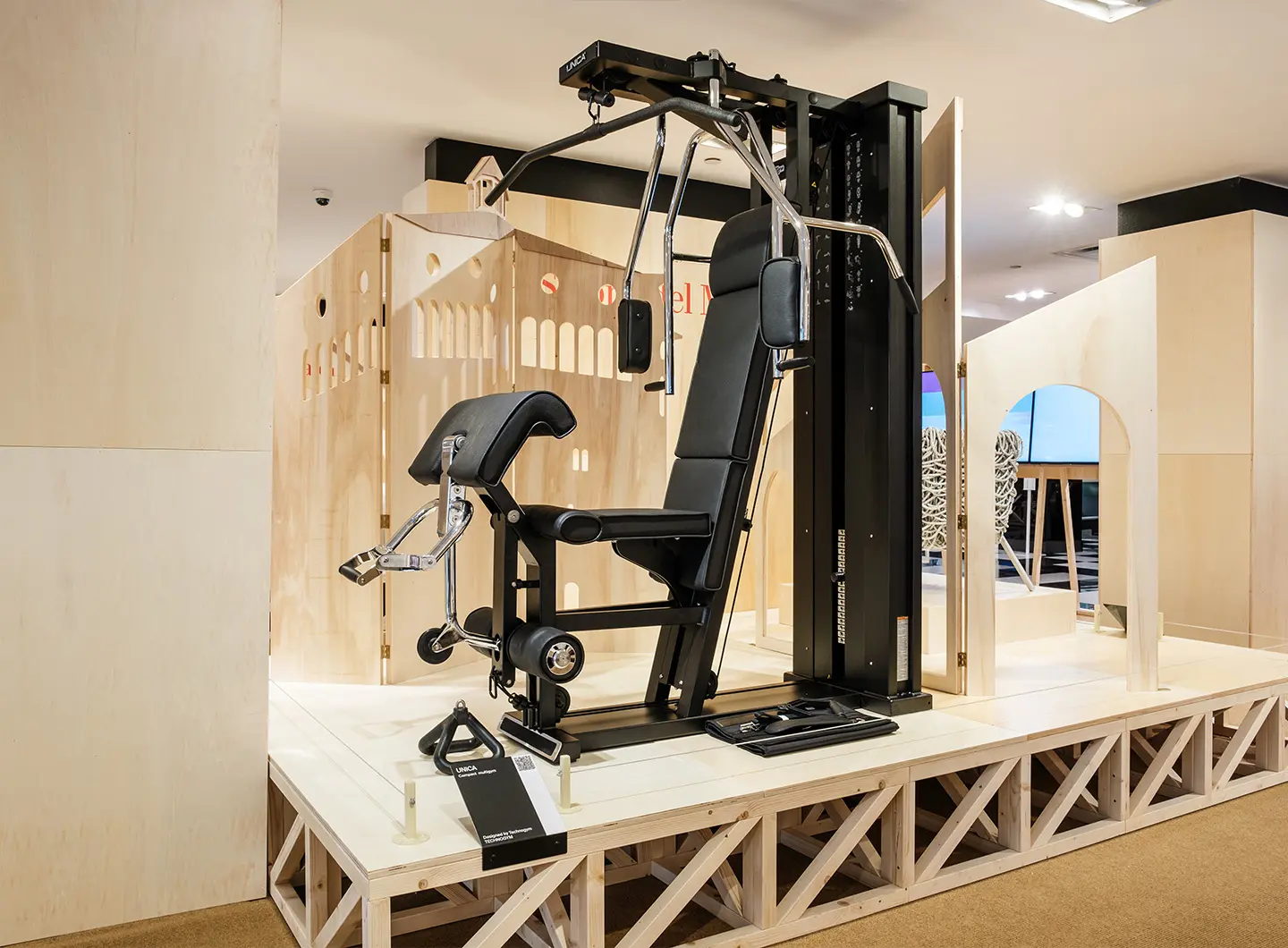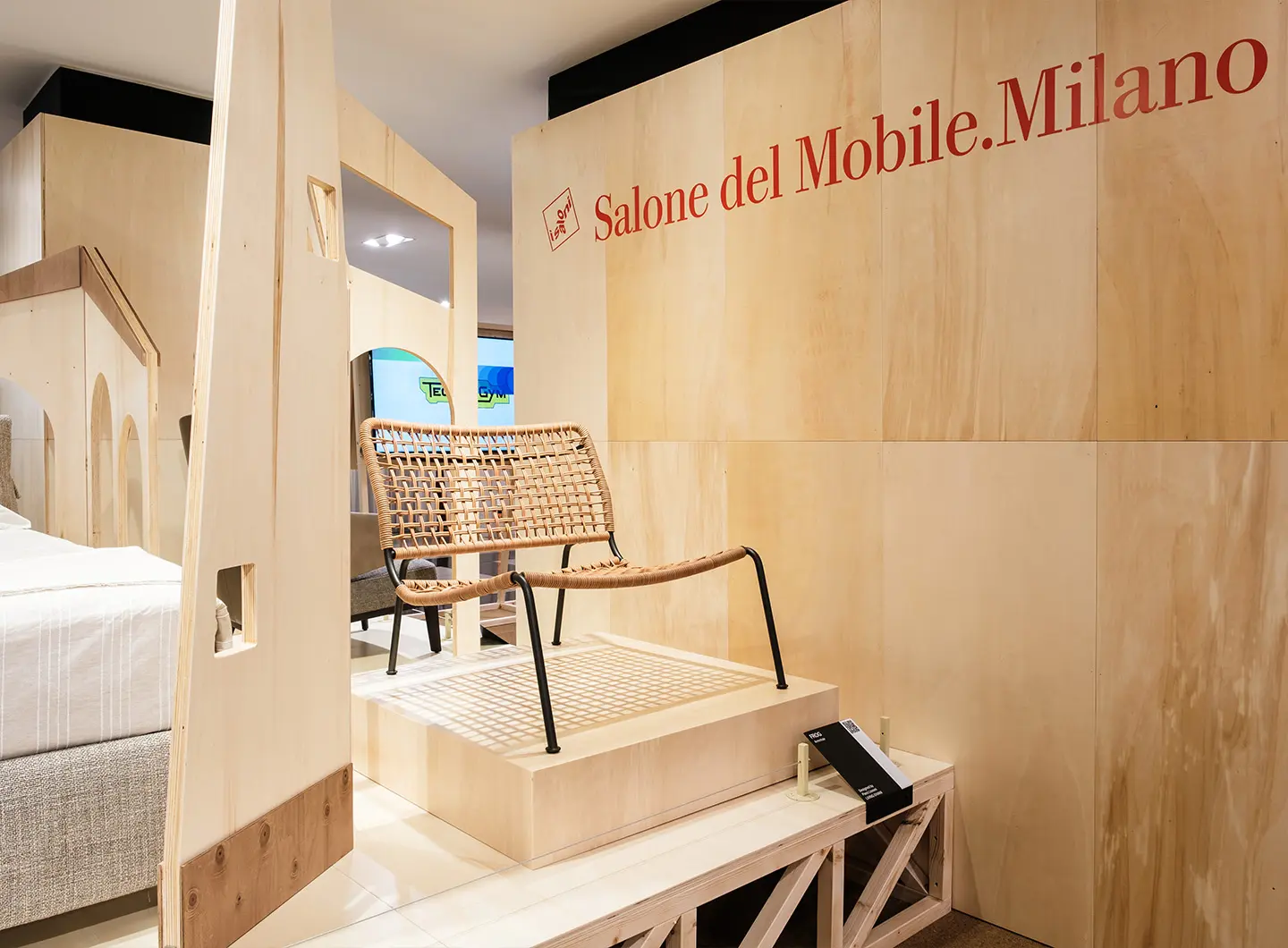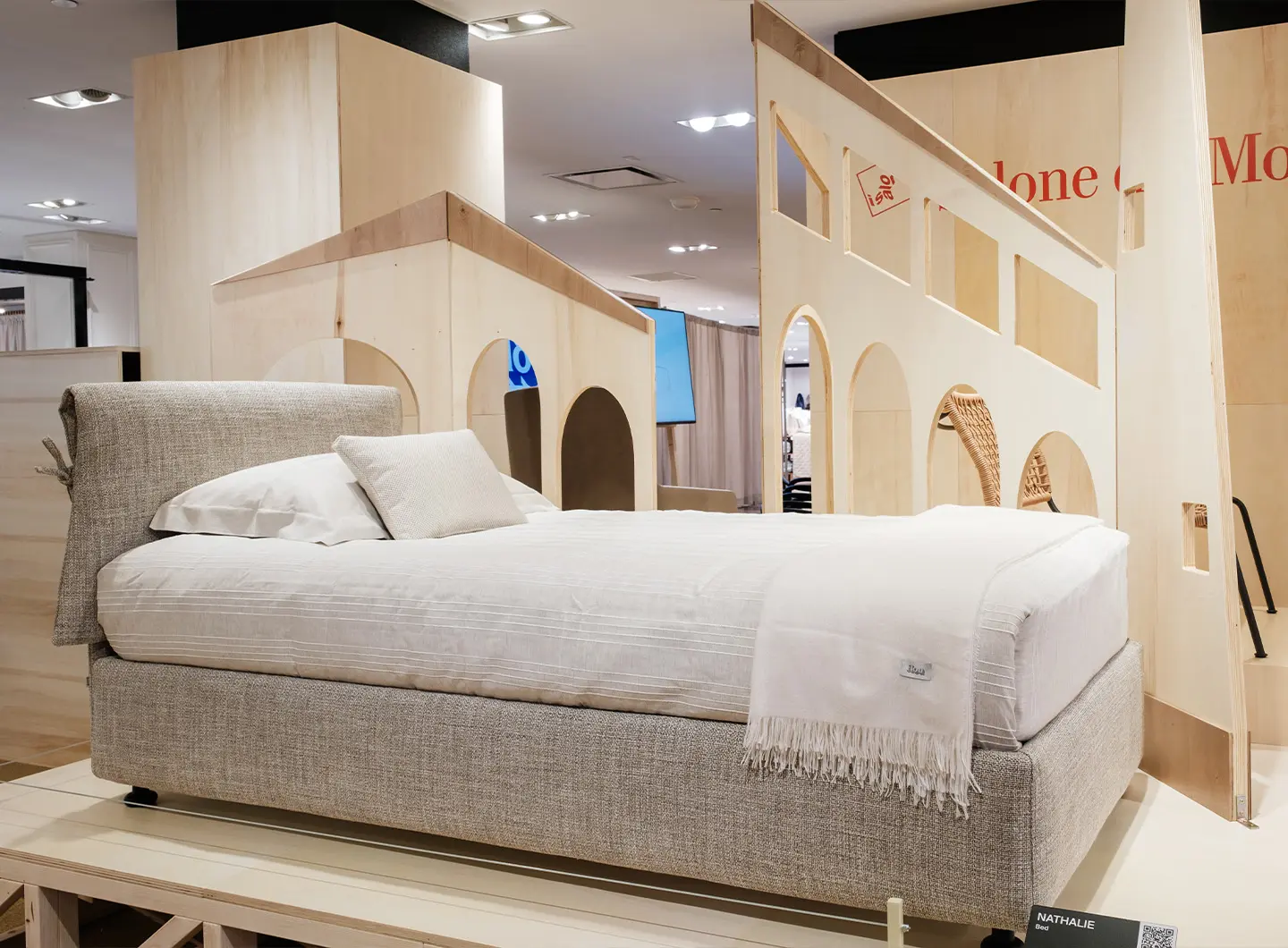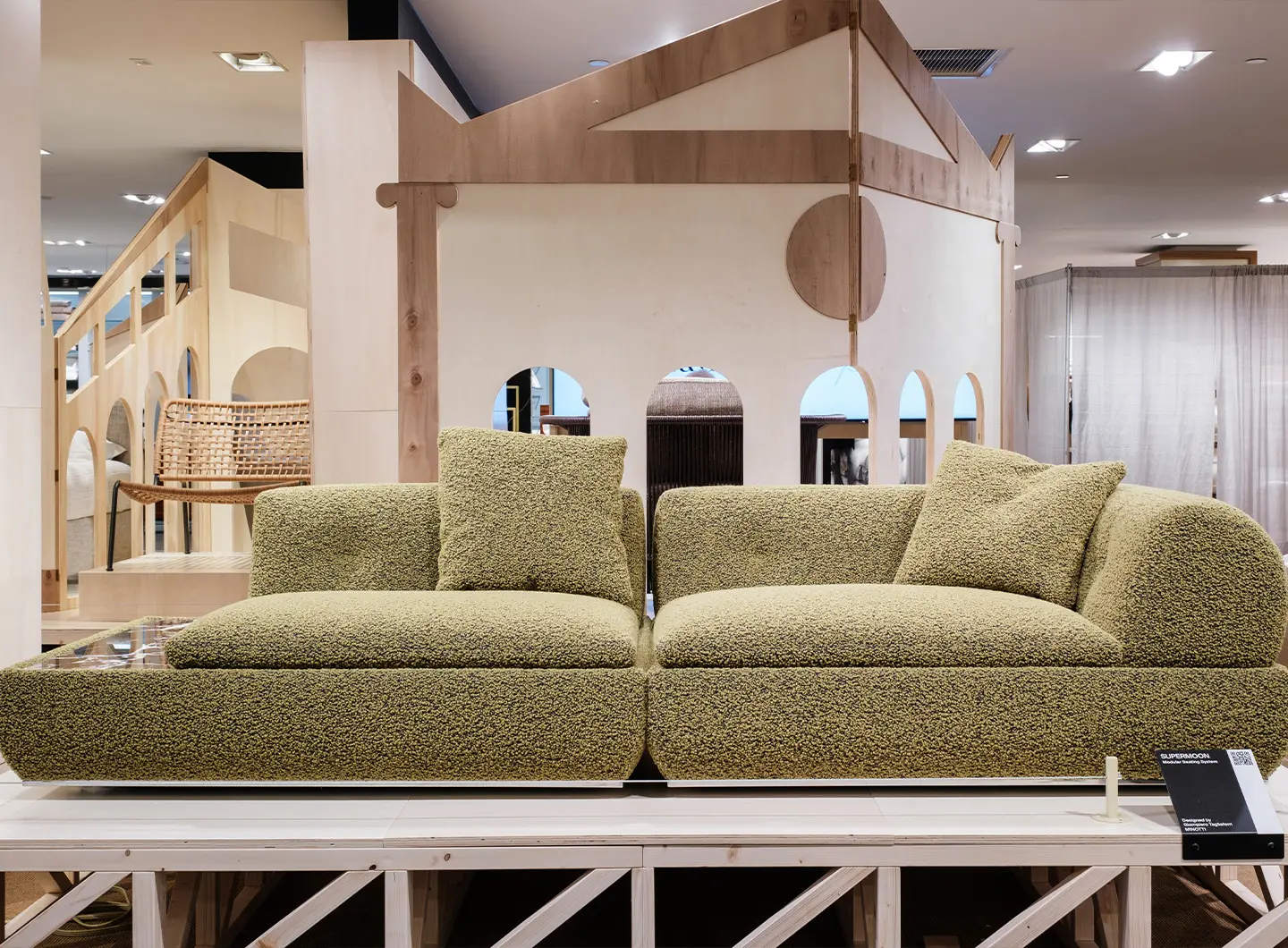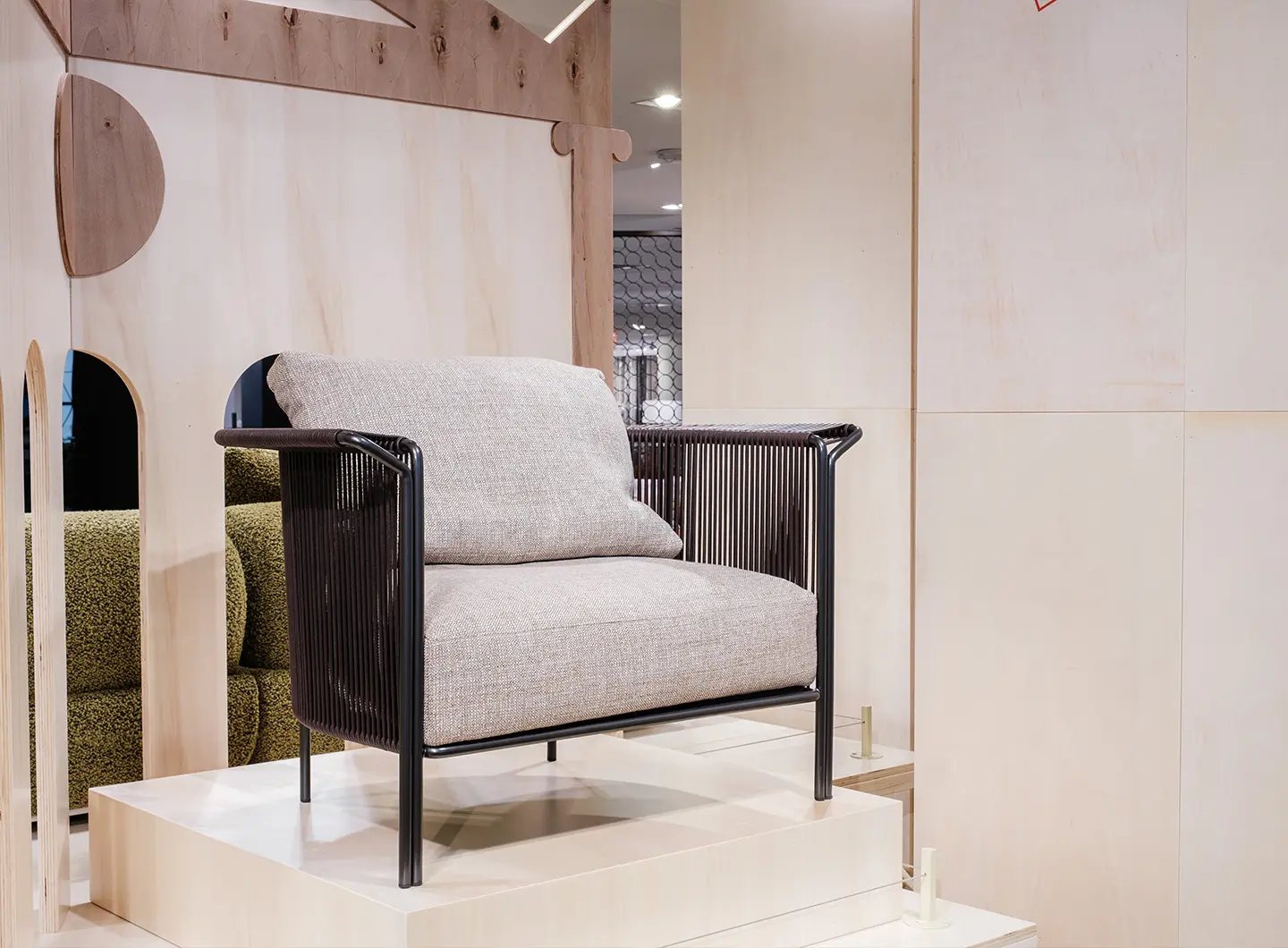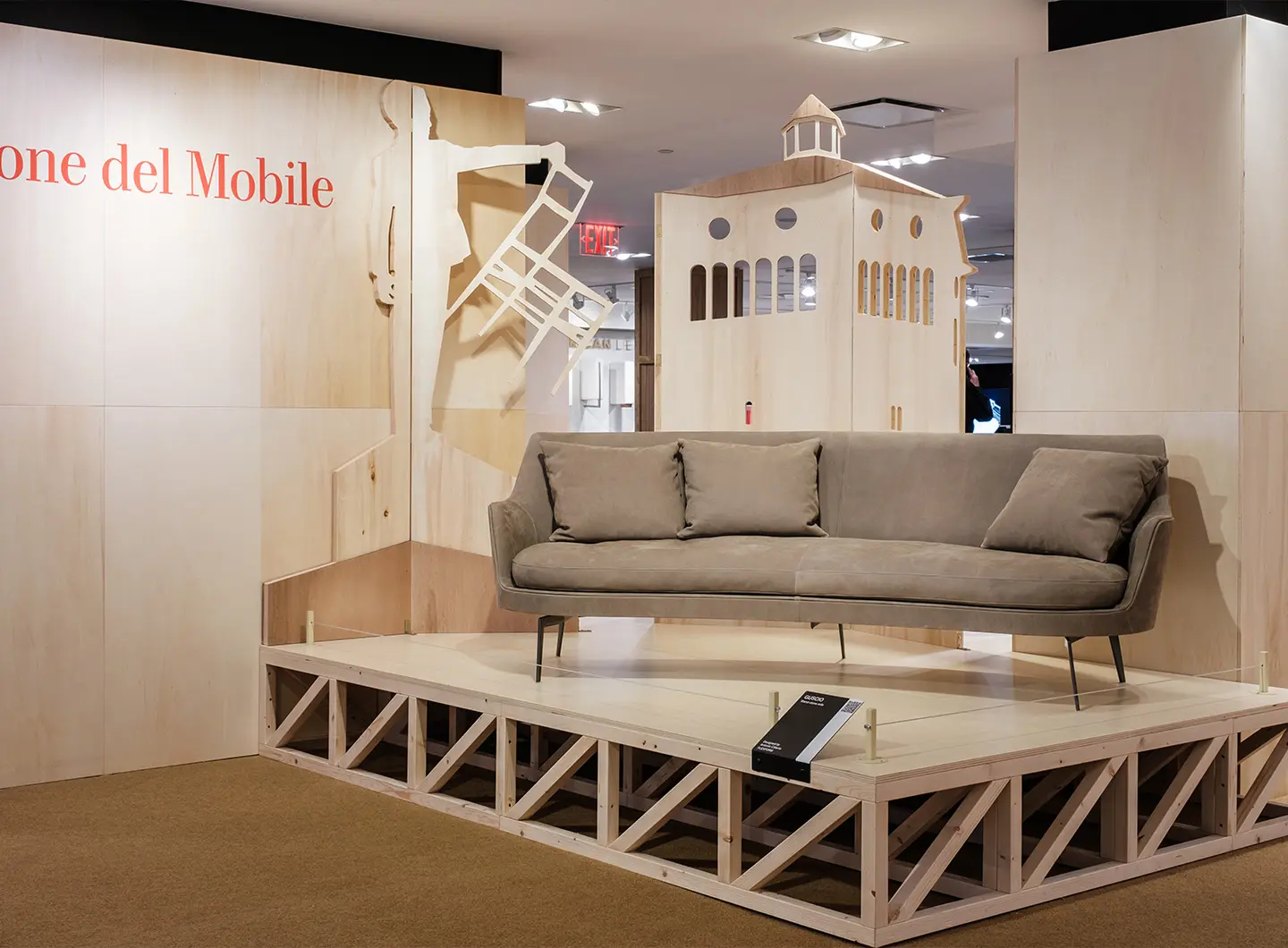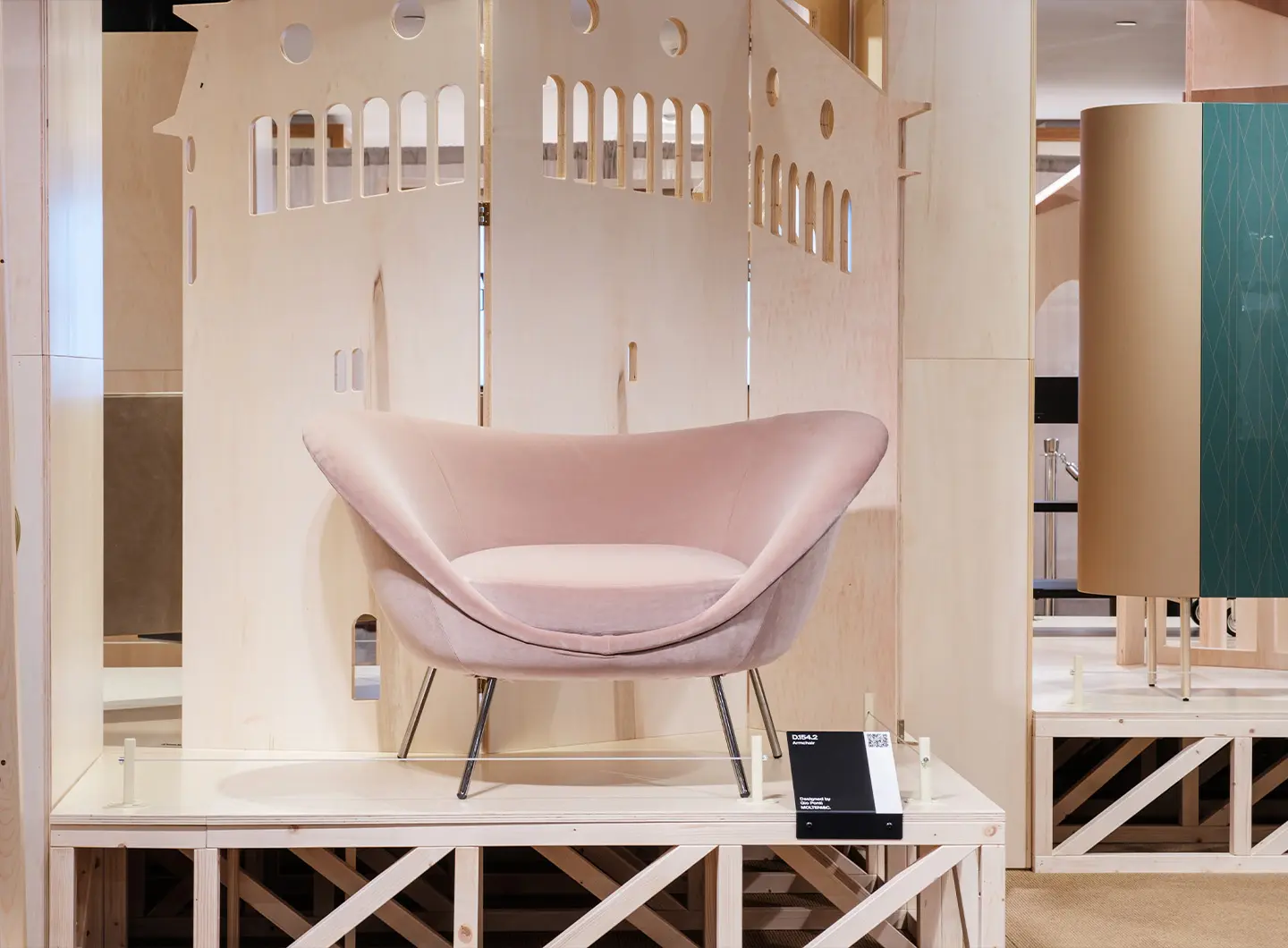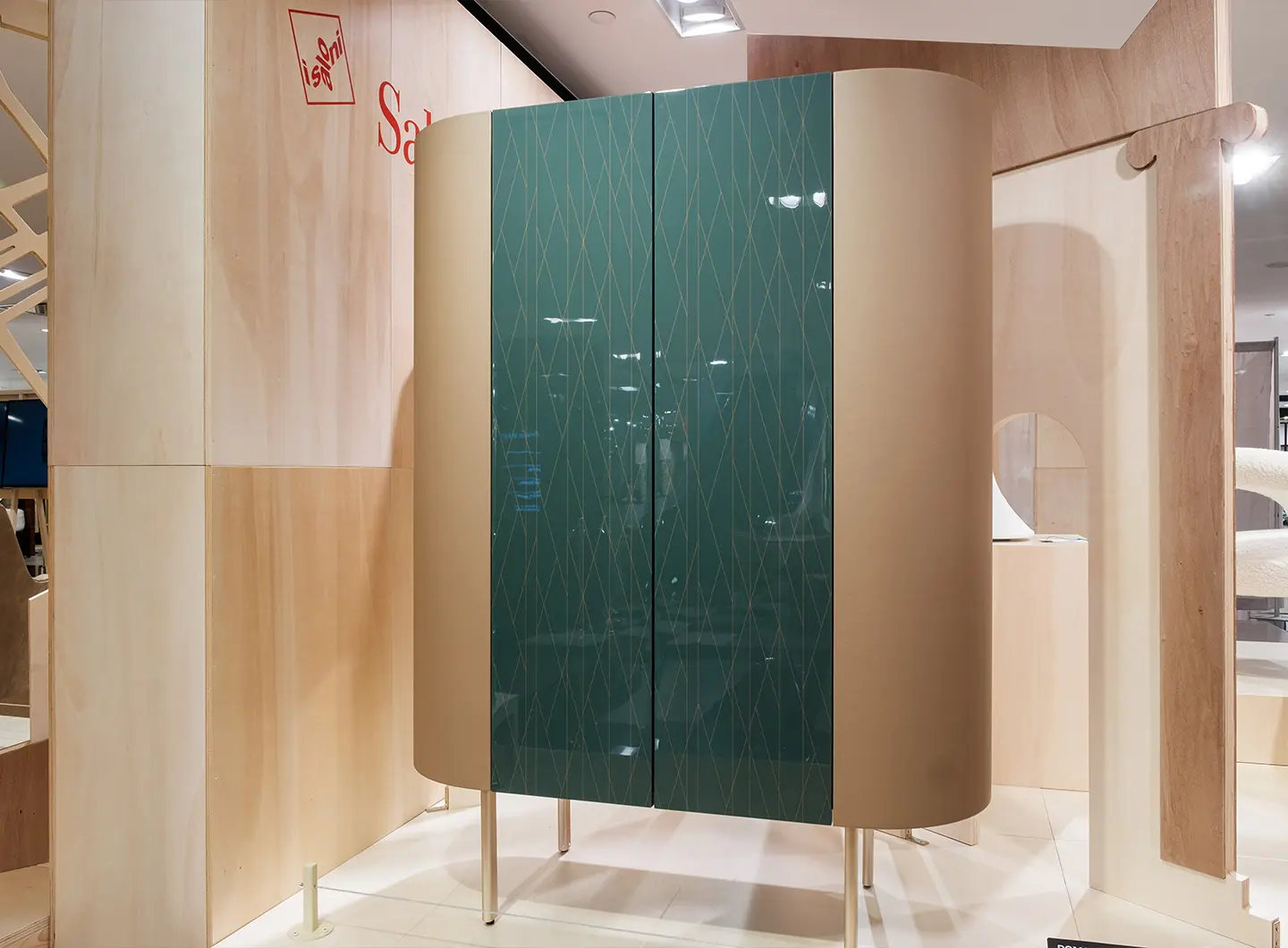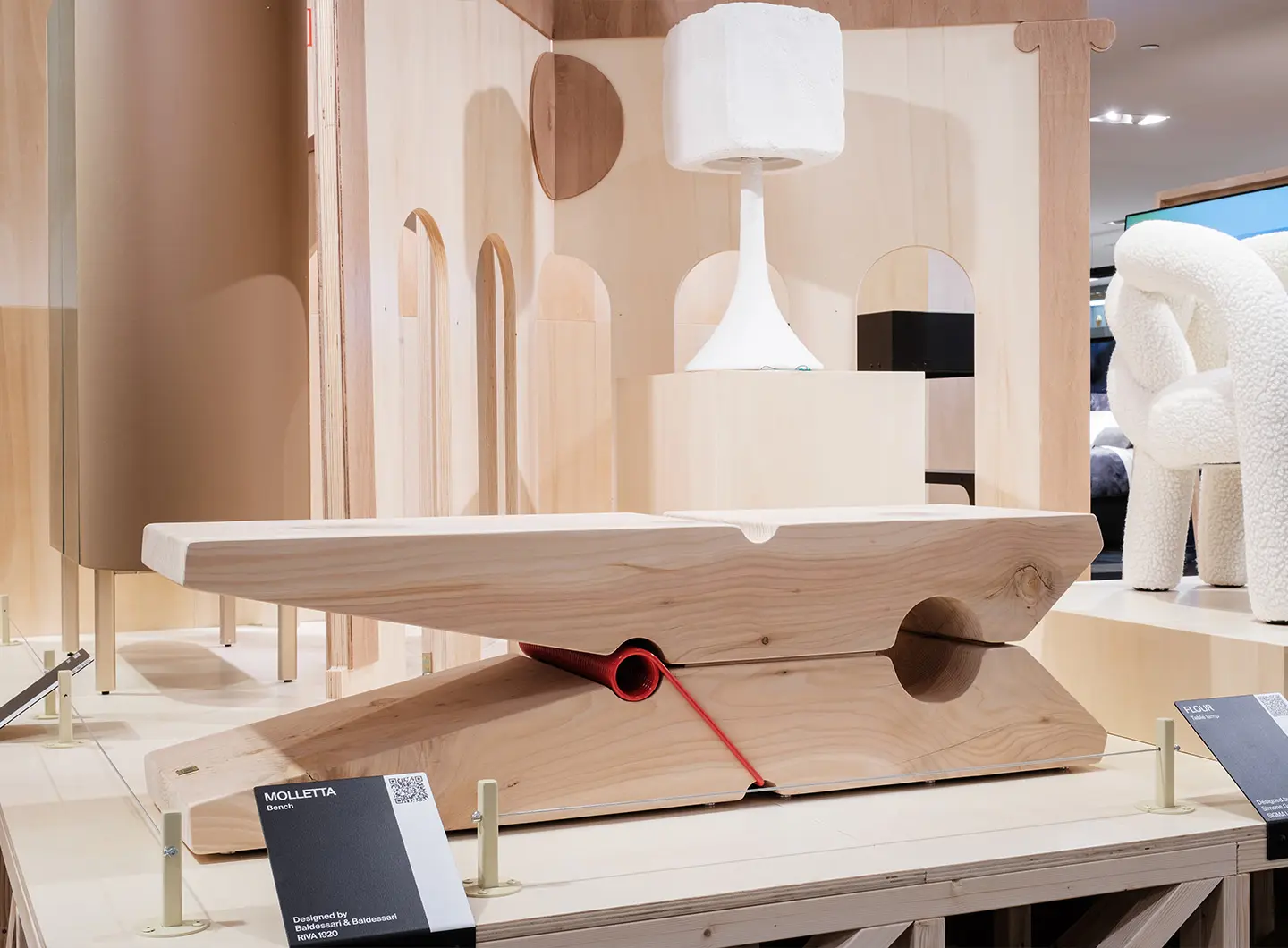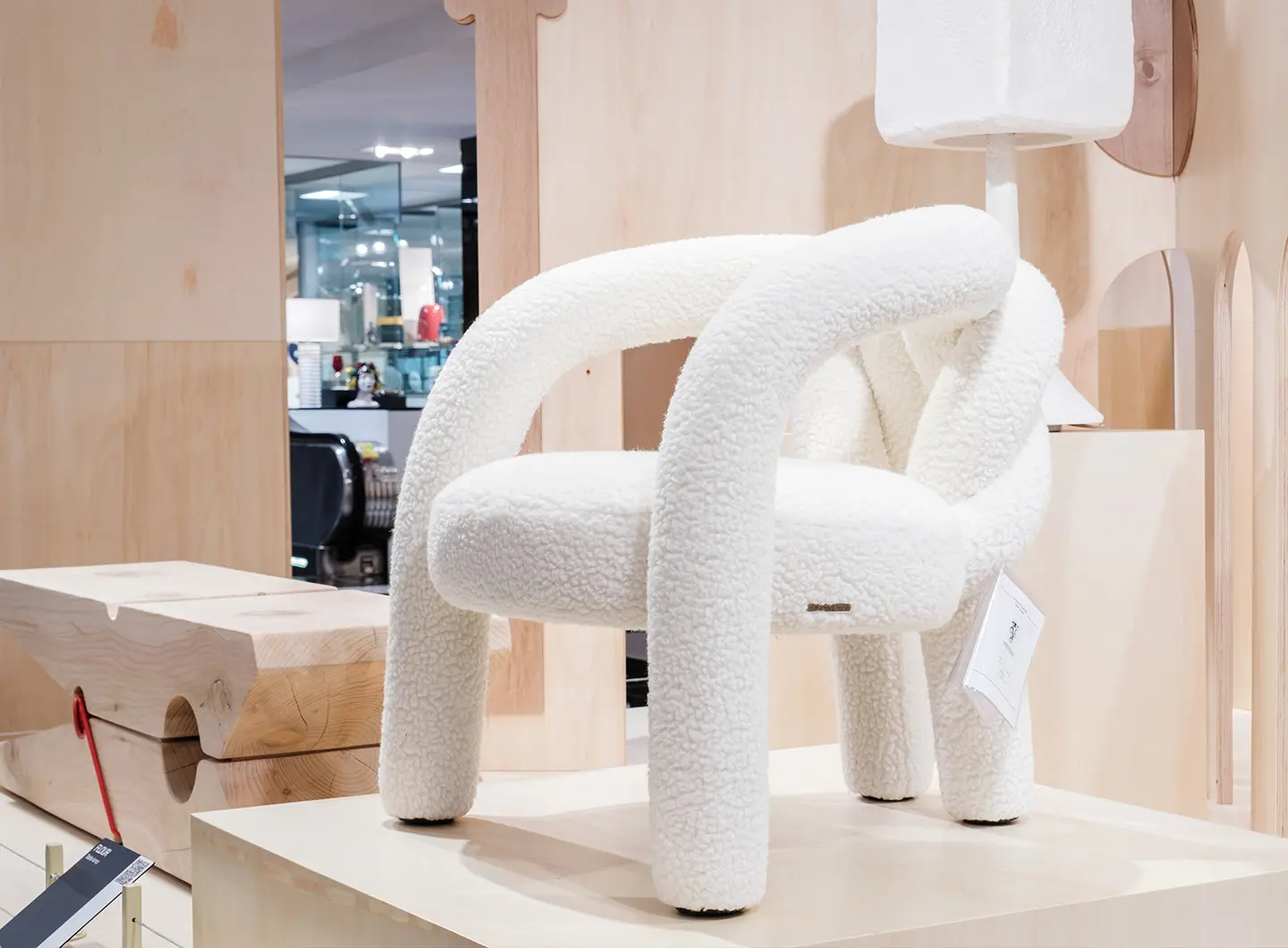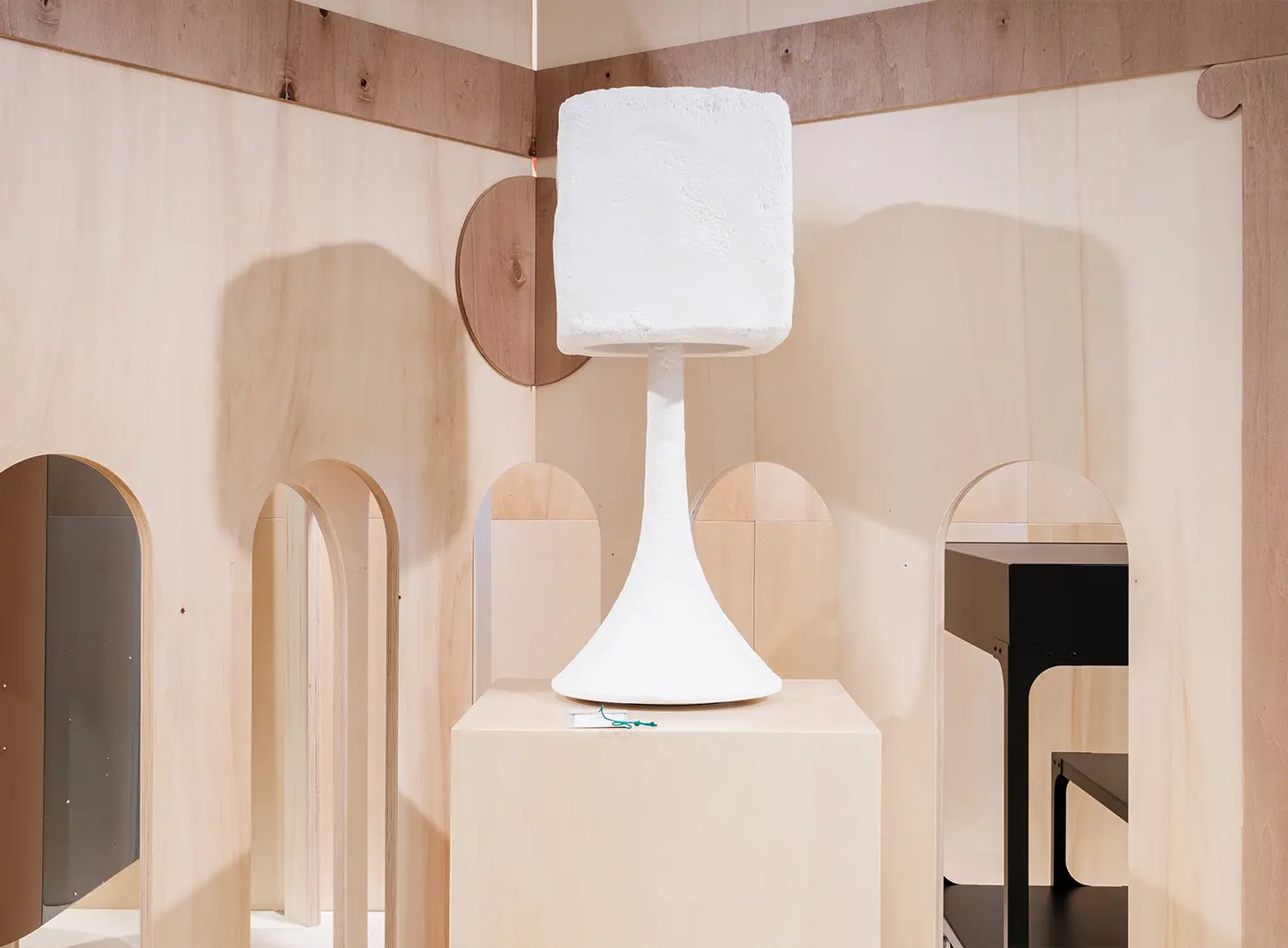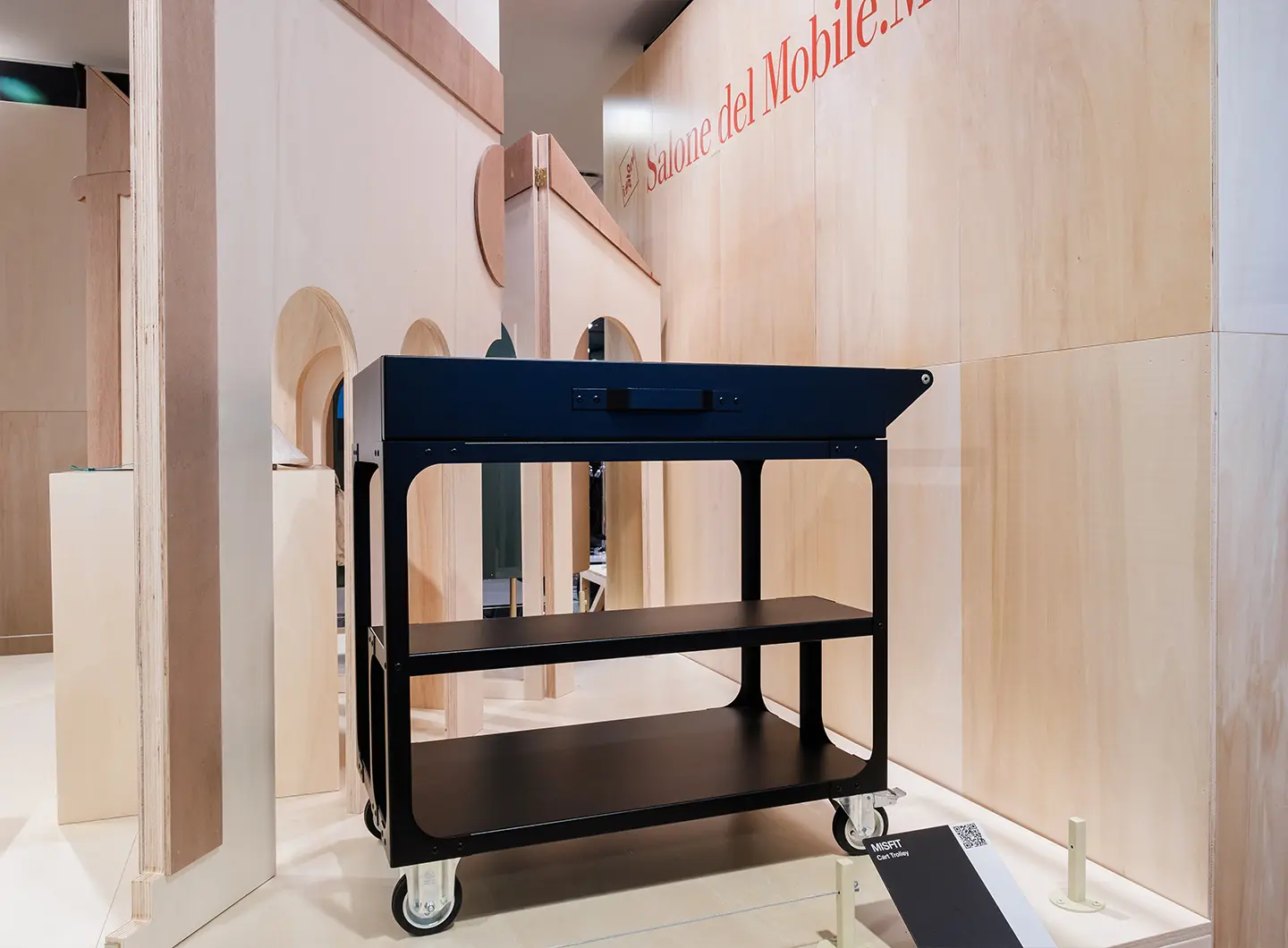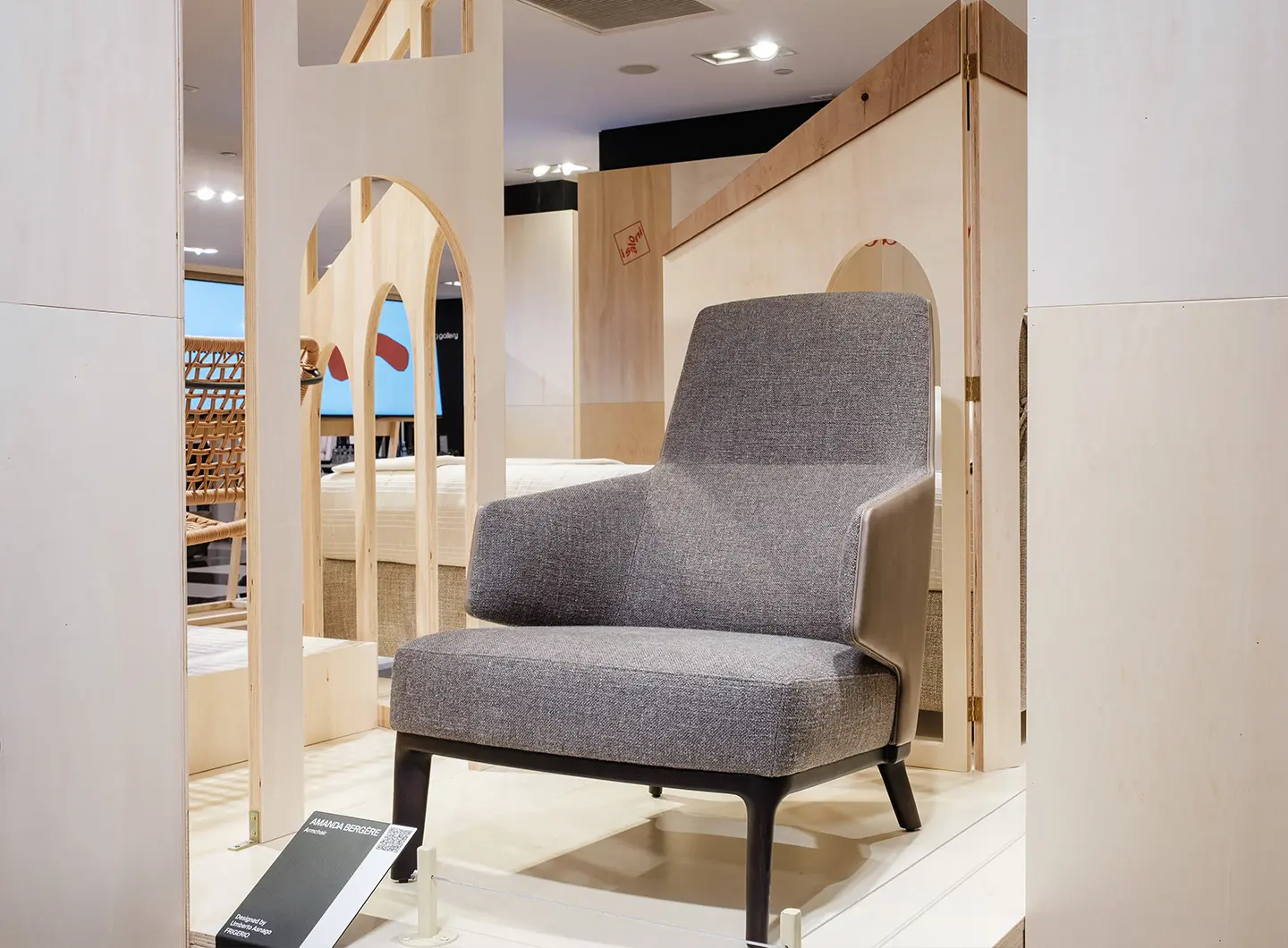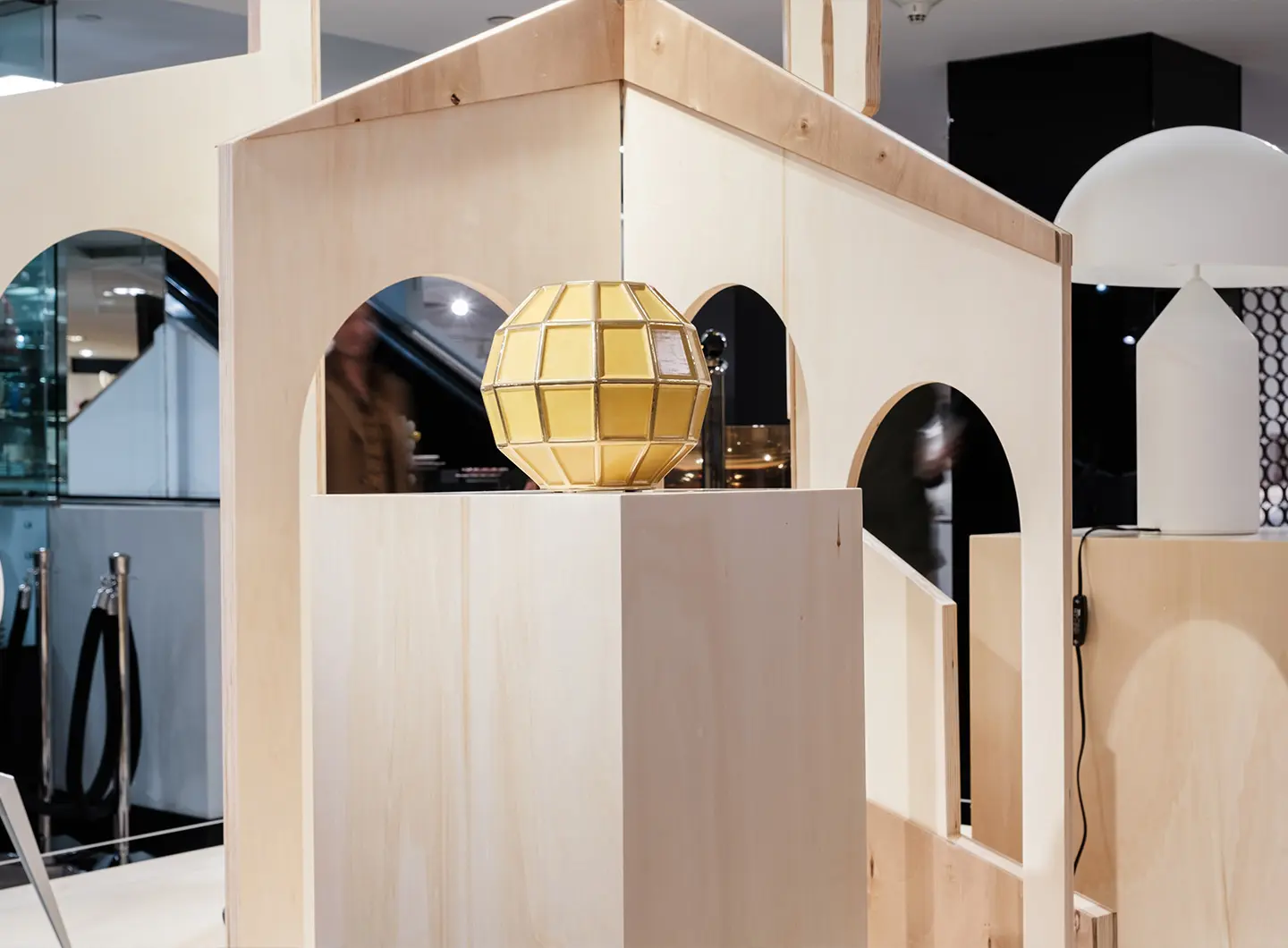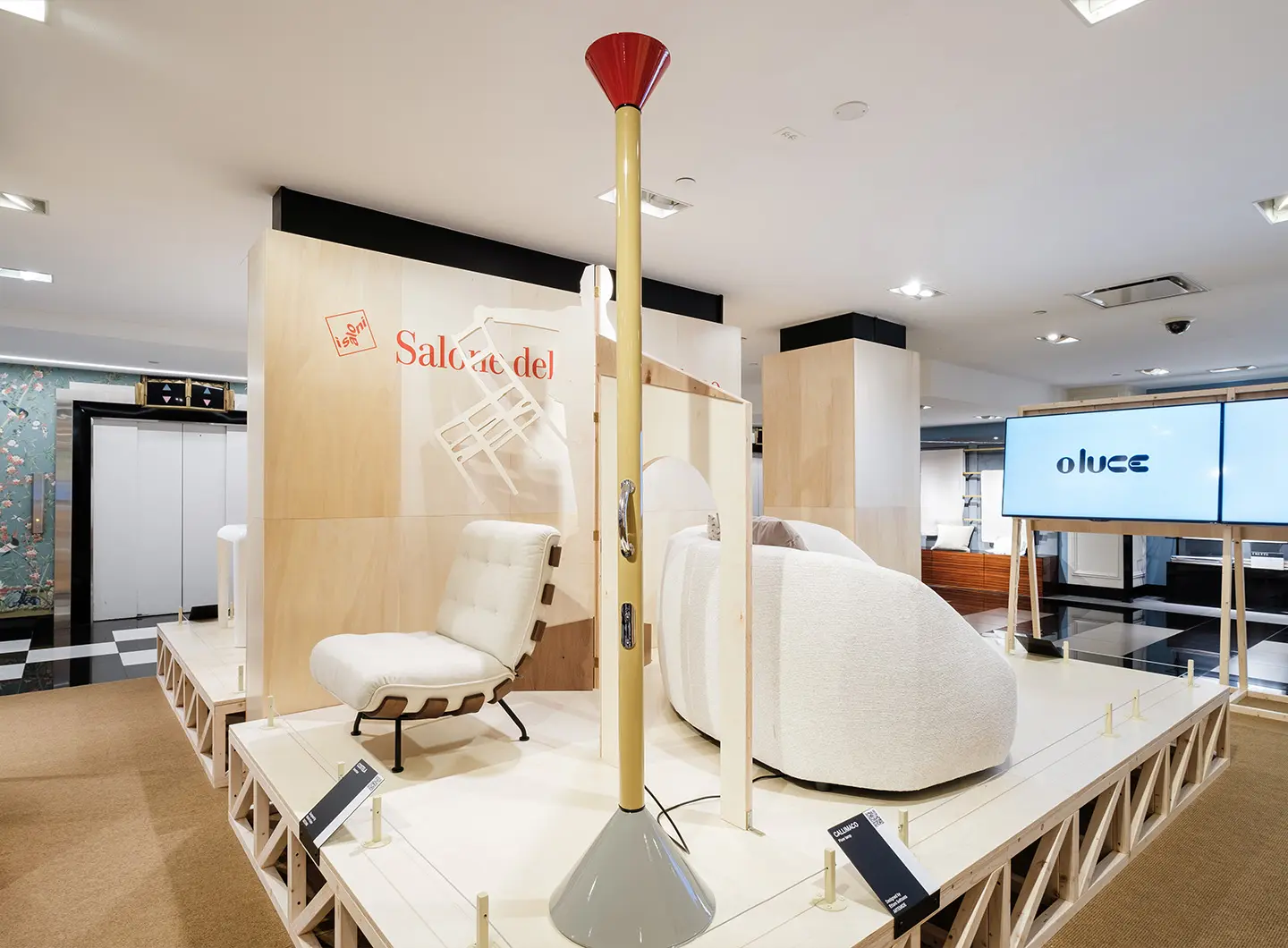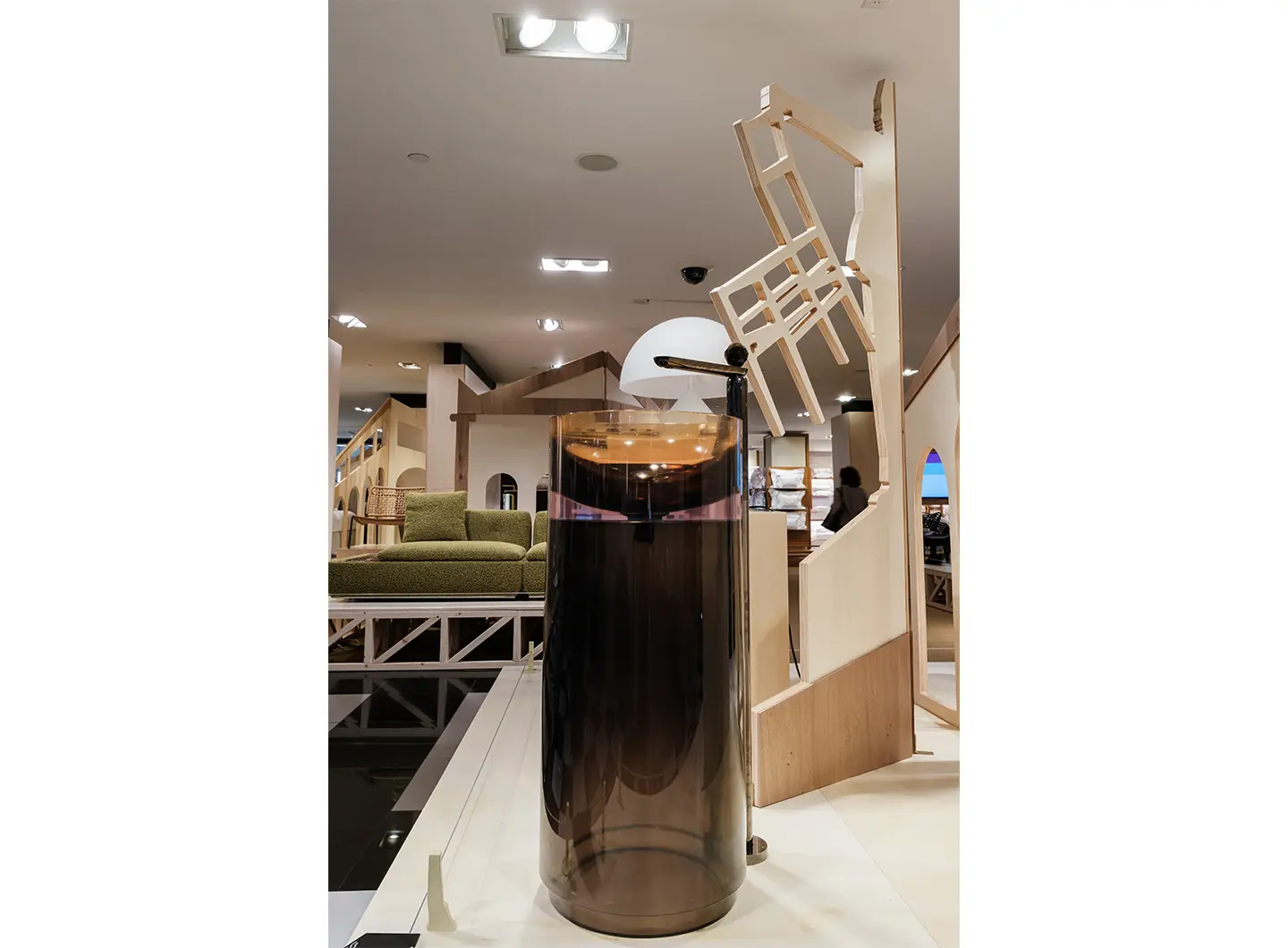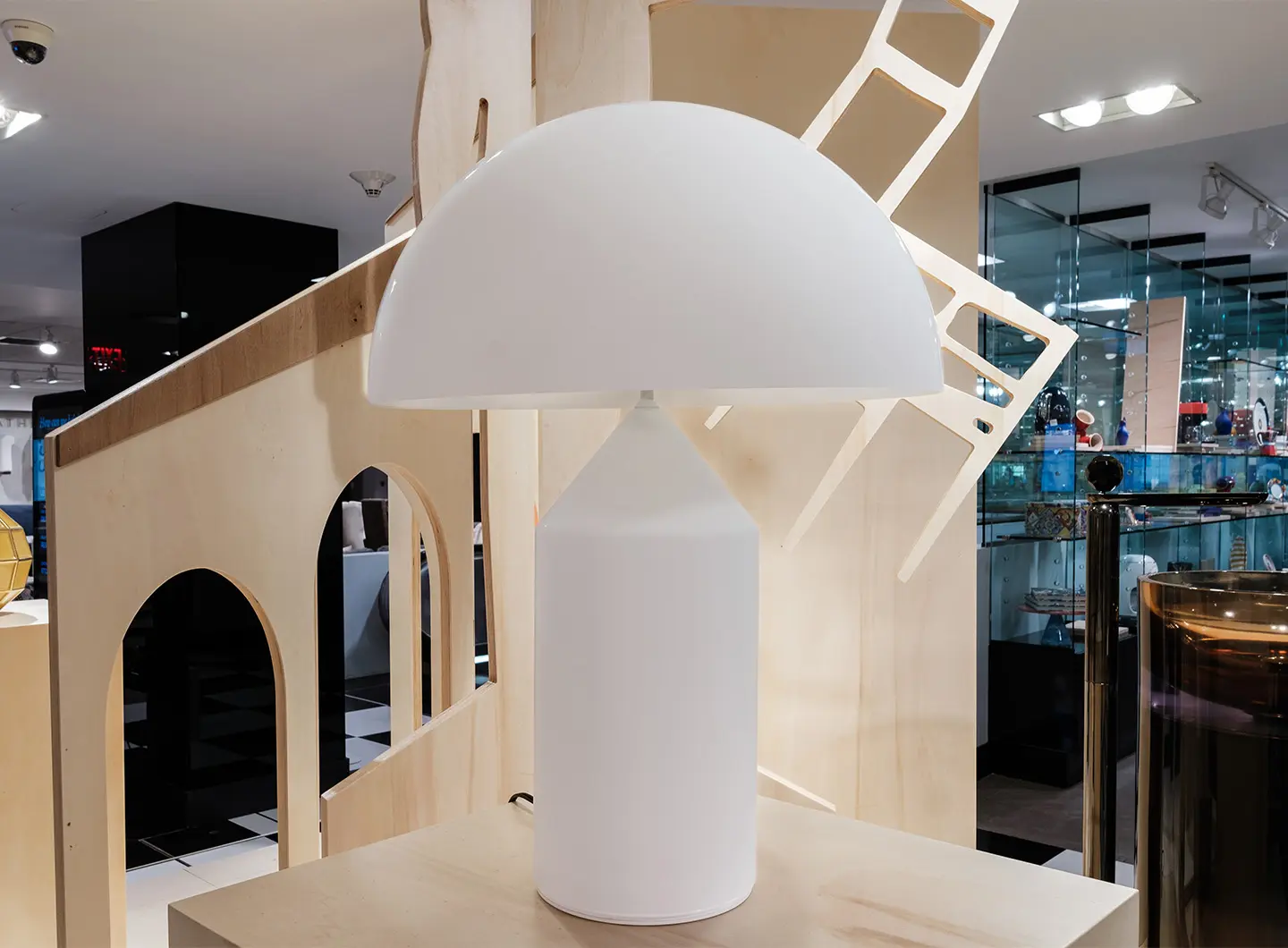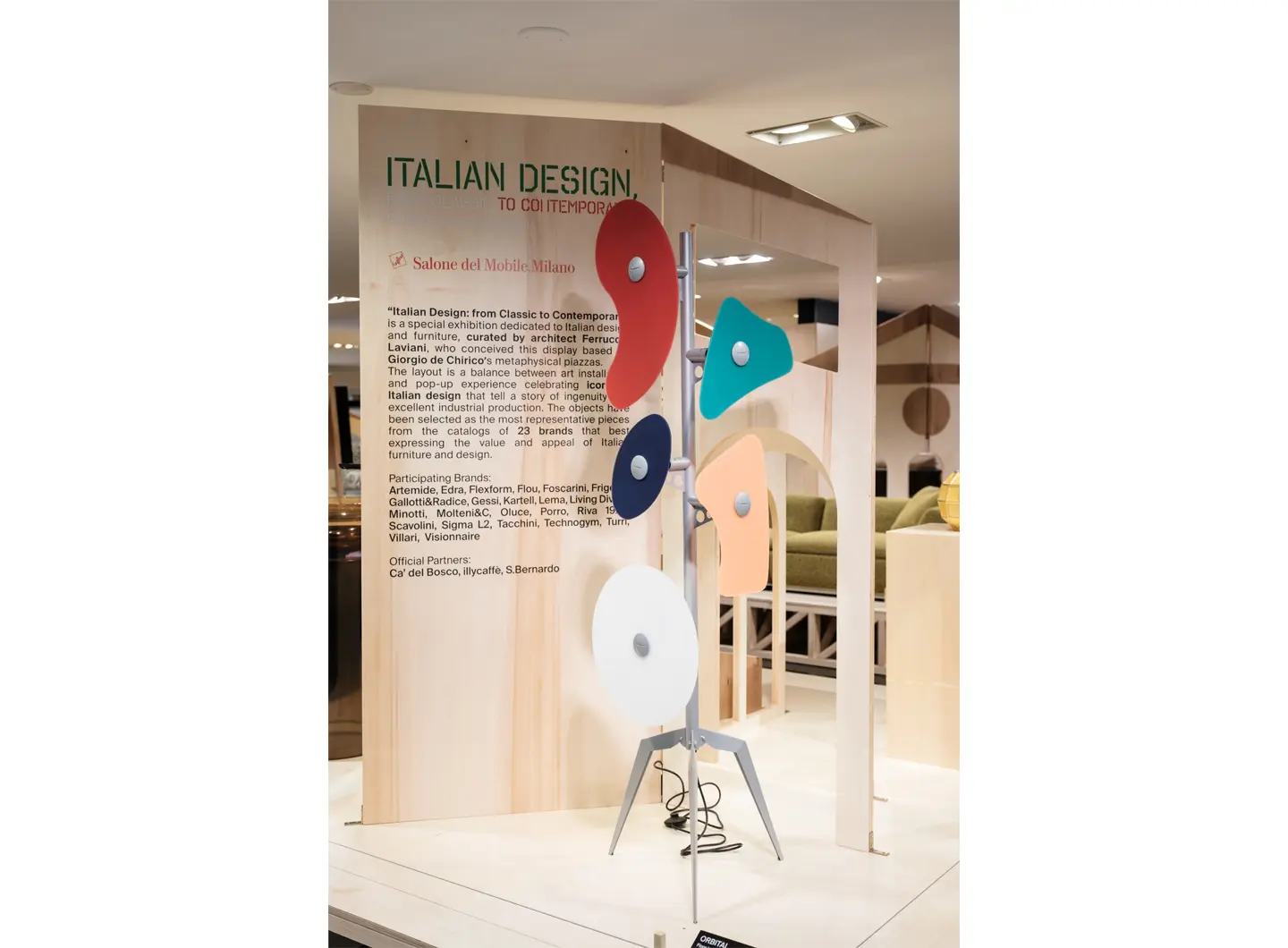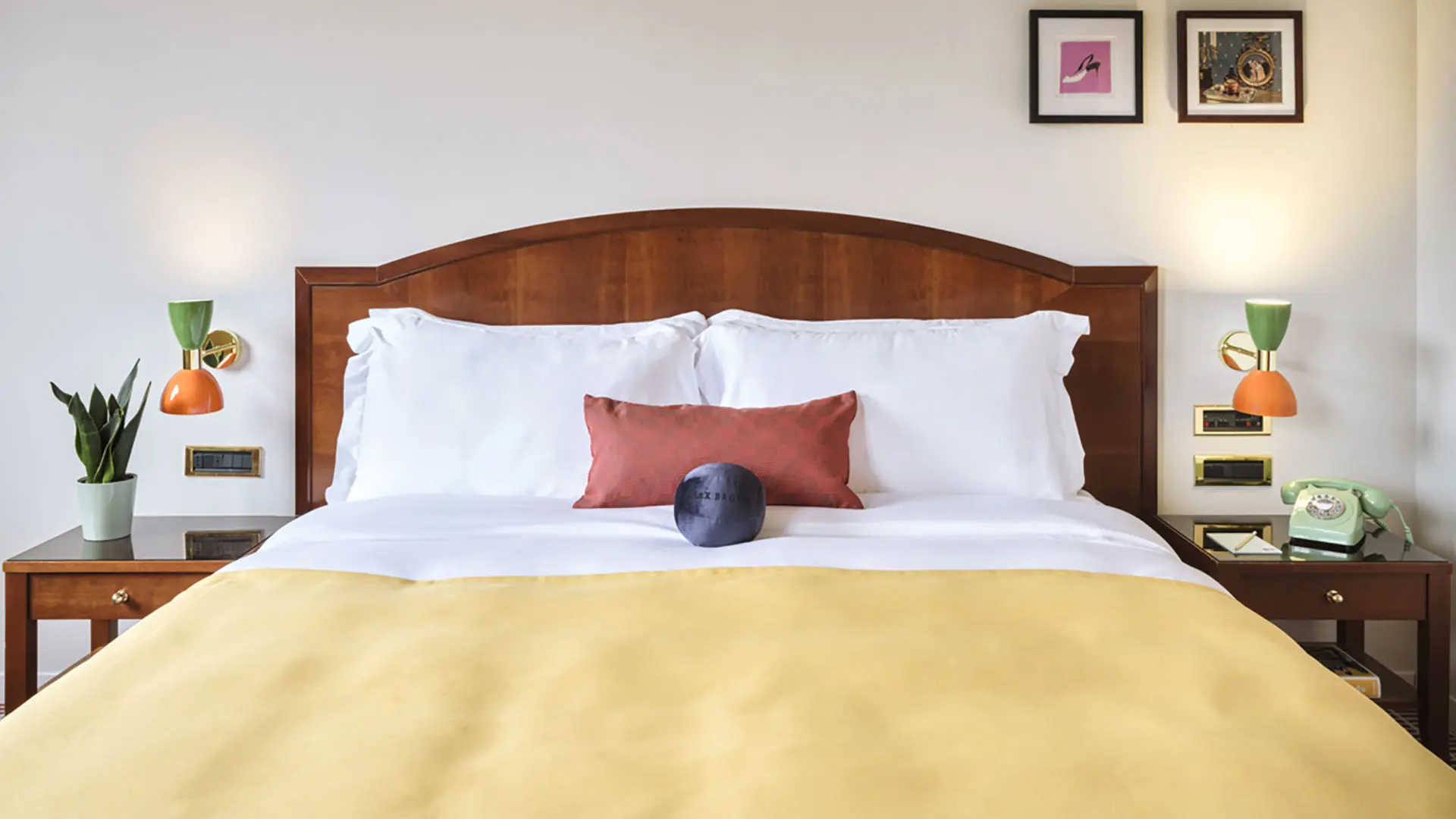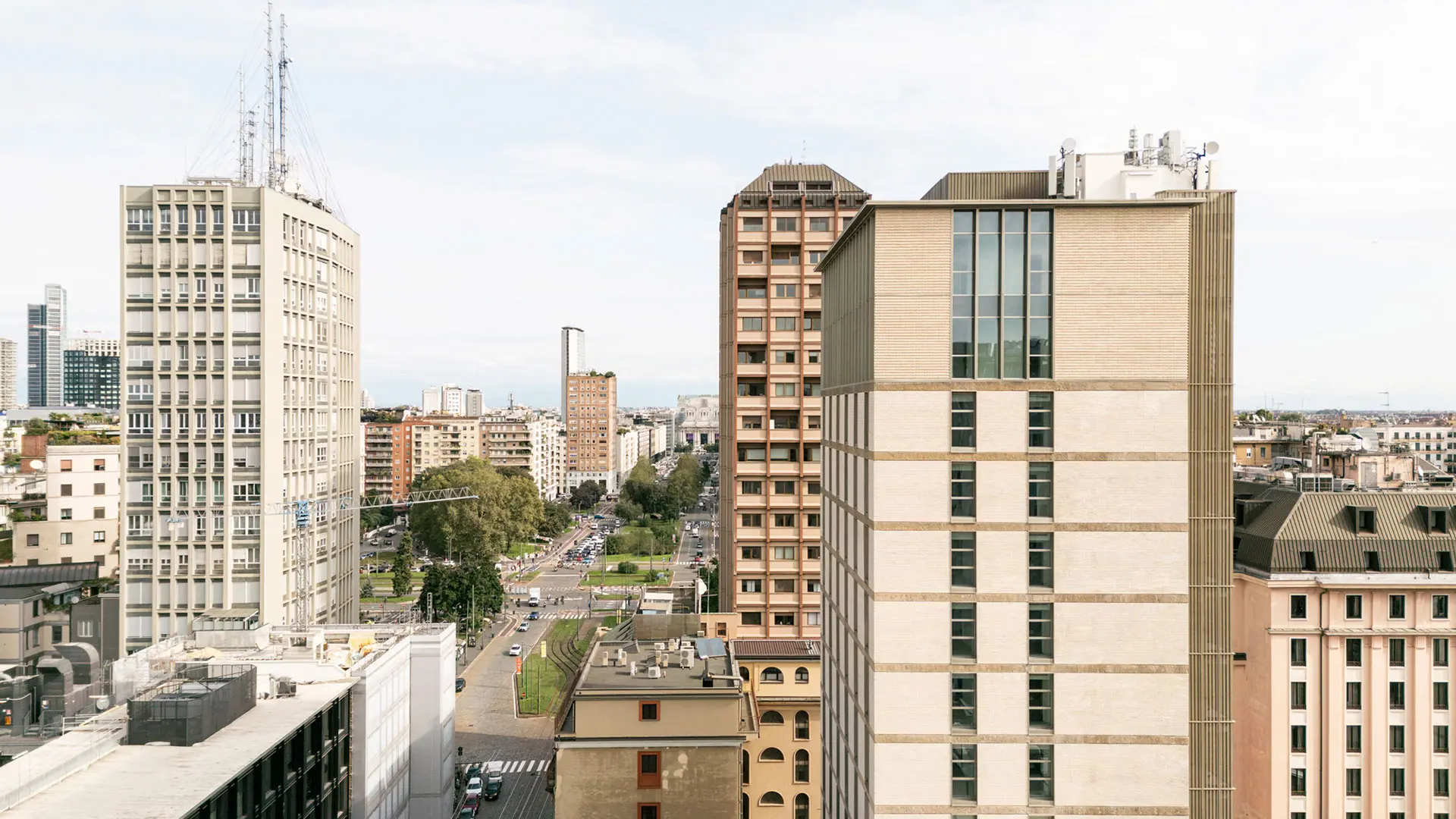In partnership with MiCodmc, a selection of establishments ripe for discovery during the 63rd edition of the Salone del Mobile.Milano, from 8th to 13th April
Ferruccio Laviani and Italian Design in New York
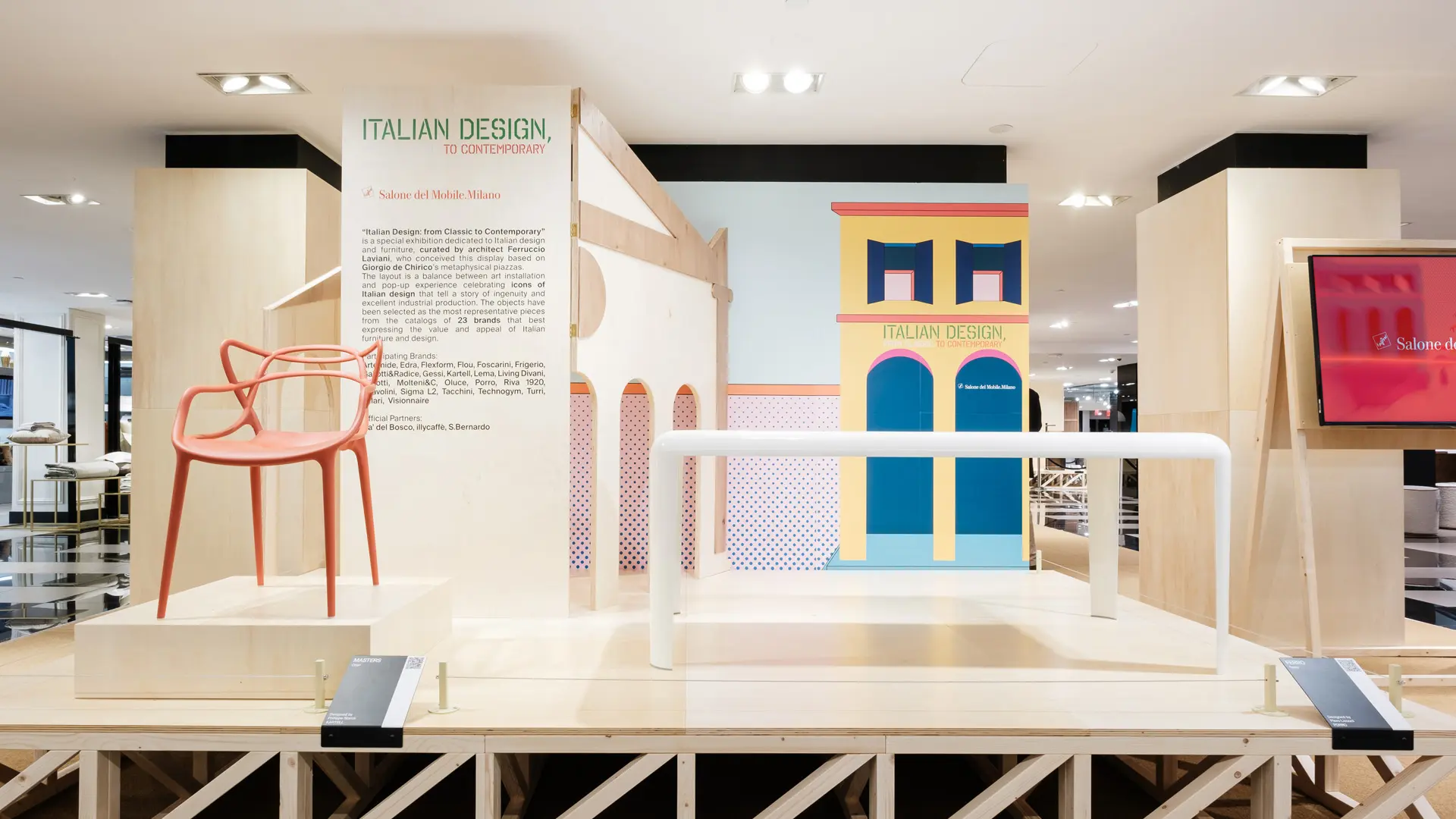
"Italian Design: from Classic to Contemporary", Salone del Mobile.Milano for Bloomingdale’s. Site-specific installation curated by Ferruccio Laviani - Ph. Davide Colombino
From 5 to 29 September, at Bloomingdale’s, the department store in the Big Apple, an exhibition and a series of talks together with the Salone del Mobile.Milano, between De Chirico, Luca Ronconi and Achille Castiglioni
“Evening falls swiftly.” Early in the morning, starting at 7.30, the architect and designer Ferruccio Laviani is already at the studio working on his many projects - products, houses, restaurants, collections and most recently the installation Italian Design: from Classic to Contemporary conceived together with Bloomingdale’s department store in New York from 5 to 29 September. At the end of the day an hour of sport and, then, back home. “You have to keep up the pace, otherwise you can’t really deal with everything.”
I don’t find it so strange. It’s my profession, as such I have to respond to my clients. I have to try and meet the deadlines and give them what they expect.
After a presentation in 2019 in Tokyo, in a department store similar to Bloomingdale’s, they asked me because they wanted to understand the possibility of replicating a similar project in the United States with the Salone del Mobile. The time was short, but we’re succeeding. At first we did a small site inspection, then, after seeing the spaces, we exchanged some ideas, with both the managers of Bloomingdale’s and with the Salone del Mobile and with the president Maria Porro.
We chose a fairly scenic project that was easy enough for everyone to understand, even those who don’t necessarily talk about design or deal with it. We wanted to tell the story of Italian design and, consequently, the Salone del Mobile.
It is the one that’s a bit more theatrical, a kind of tribute to De Chirico’s celebrated piazzas, which almost everyone knows and immediately identifies as what Italy represents. There is an idea of scenography à la Luca Ronconi, or even Achille Castiglioni, with the exhibition Le Vie d’Acqua: da Milano al Mare. And there’s an idea of Arte Povera, with reference to the artist Mario Ceroli, We have used natural materials such as wood which is also in the DNA of most Italian furniture manufacturers and, in part, of the members of the Salone del Mobile.
We have made a small selection of more or less recognizable products of the Italian output in the sector, some historical, others contemporary. At the same time, I didn’t want this theatrical wooden exhibition to be too tied to the past either. On the other hand, I developed a graphic image that was a little more contemporary and radical. Something not completely disconnected from the rest of the display and which serves to convey this event both through videos and communication.
I believe that this synergy or, if you like, even mythicization of the various genres has always existed. Today perhaps we amplify it more because sometimes it serves as an argument to explain things. Anyone, even in the past, draws on something else to express themselves at their best. We’re doing this exhibition in another place, where the cultural references are different. I also played my trump card of things that others know. Doing something extremely sophisticated risked not achieving what it really should be, that is, raising awareness of both the Salone del Mobile and Italian production.
We are the result of what we see, what we have learned and what we continue to accumulate. I have always based my work on the interesting things I’ve seen, that have influenced me. No one invents anything out of nothing. These days there is the beautiful exhibition on Gae Aulenti at the Triennale, where you can see the connection, which tends to be missing today, between art, design and theater. It’s a problem of culture. Once there was a whole series of synergies, of different fields influencing each other. Without nostalgia, every now and then it’s good to remember what a wealth of good things we have and how nice it would be if they returned.
The problem is that there is no reason to unite. It is a question of education and cultural references, which is the fulcrum on which everything rests, even class or street protests, and demonstrations, also understood in the artistic sense. Where I was born, in the province of Cremona, under the arcades people used to meet to play cards, or drink white wine, or talk about the people passing by in the street. The piazza is part of Latin culture. De Chirico’s pictures, in addition to the metaphysical and dreamlike, are certainly part of our DNA and perhaps they’re what it’s easiest for us to represent.
That exhibition told the story of radical Italy, a transformation not only of Italian culture but also of the furniture and design companies, of Made in Italy. Since then, design has evolved, sometimes reflecting the culture from which it was derived. From the 80s with Memphis to the pseudo-minimalism of the early 2000s. Then there was a return to curls and frills and then a aesthetic cleaning up. We have also been lucky that technology has evolved and has given us the opportunity, in addition to projects with different finishes, to also have the perception of a product made with a different material. Obviously, a market that perhaps did not exist earlier played its part, a different distribution of companies that once looked only within their own borders and that today are almost more recognized abroad than in Italy.
Today everything has changed, which is also why it is interesting to have an exhibition in a place frequented by New Yorkers. Today’s new companies have the great merit of conveying not only the product but an idea of a company with its own philosophy, a taste, a recognizable personal style. We are also trying to do this, in our own small way, with this exhibition.
Laviani has selected 23 brands to represent the value of Made-in-Italy furniture manufacturing: Artemide, Edra, Flexform, Flou, Foscarini, Frigerio, Gallotti&Radice, Gessi, Kartell, Lema, Living Divani, Minotti, Molteni&C, Oluce, Porro, Riva 1920, Scavolini, Sigma L2, Tacchini, Technogym, Turri, Villari, and Visionnaire.
The talks program “Conversations about Italian Design”
Curated by Annalisa Rosso, Editorial Director & Cultural Events Advisor of the Salone, the talks program “Conversations about Italian Design” will see the participation of leading figures on the national and international housing scene. They will offer an opportunity to reflect on the meaning and future of design and production made in Italy and the selection of furnishings on display: three encounters that illustrate Italian creativity and the close ties between design, industry and the Salone del Mobile.Milano. The event is accompanied by its official partners Cà del Bosco, S. Bernardo and illycaffè.
Wednesday, September 4th - 6:00pm
Maria Porro, Kelley Carter, Marva Griffin and Ferruccio Laviani in conversation with Felix Burrichter
Maria Porro, President of Salone del Mobile.Milano
Kelley Carter, Bloomingdale's Fashion Director
Marva Griffin Wilshire, Curator and Founder of SaloneSatellite
Ferruccio Laviani, Architect and Designer
Moderator: Felix Burrichter, Editorial & Creative Director of PIN-UP magazine
This talk will be a chance to reflect on the value of the Salone del Mobile.Milano and its heritage, its international influence and future evolution, and the contribution of the new generation of designers promoted by Marva Griffin Wilshire through the SaloneSatellite. The panelists will also explore the crucial role of Italian brands in the international design market and delve into the meaning of Ferruccio Laviani’s set design, which has transformed the sixth floor at Bloomingdale’s into a unique experience showcasing the values and the history of Italian companies, the factories “where dreams that can still be touched are born.”
Wednesday, September 11th - 6:00pm
Eleni Petaloti and Qiyao Li in conversation with Ingrid Abramovitch
Eleni Petaloti, Co-Founder of Objects of Common Interest
Qiyao Li, Associate Principal at Skidmore, Owings & Merrill
Moderator: Ingrid Abramovitch, Executive Editor of ELLE DÉCOR
This talk will present Italian design as an international trailblazer, examine the crucial role of Italian brands globally, and reflect on the sector’s “next perspectives”. Topics to be addressed in depth include Ferruccio Laviani’s installation, which is inspired by the Italian piazza: a paradigm of the allMediterranean ability to broaden the gaze and connect different worlds and experiences.
Wednesday, September 18th - 6:00pm
Francesco Simeti and Stefano Giussani in conversation with Wendy Goodman
Francesco Simeti, Artist
Stefano Giussani, Partner & COO Lissoni Architecture New York
Moderator: Wendy Goodman, Design Editor of New York magazine
This talk will explore the relationship between contemporary and classical Italian culture and reflect on what makes Italian design so iconic and widely known worldwide. The conversation will also dwell on the evolution of living, considering both private and public spaces, with a particular focus on the New York scene. The dialogue will also focus on the set created by Ferruccio Laviani, a tribute to de Chirico’s art and the stage productions of Luca Ronconi, one of the greatest Italian theatrical directors of the 20th century.


 Stories
Stories
